
2024-2025 COMMUNICATIONS TOOLKIT DCSD COMMUNICATIONS DEPARTMENT
COMMUNICATIONS TEAM
Donald B. Porter, Ed.D Press Secretary
John “Q” Kegler Video Production Manager
Hector Mancia Lead Graphic Designer
Carla Parker Specialist II, Communications
Richard Stephens II, MBA Specialist II, Online Content
Jamelia Potter, MA Specialist II, Marketing Communications
Frida Flores Specialist II, Bilingual Communications
Jack Lavoie Specialist II, Graphic Design
Alicia Del Moral Office Specialist

TABLE OF CONTENTS
DEPARTMENT
Our Mission..........................................................................
H-PRIDE Values.....................................................................
Welcome Letter....................................................................
Communications Contact Page...........................................
Who We Are, What We Do..................................................
COMMUNICATIONS
Communications Platforms.................................................
Get Connected and Stay Informed......................................
How to Submit Good News.................................................
How to Submit a Job Ticket ................................................
Standard Operating Procedures for Graphic Design...........
Communication Action Plan................................................
SchoolMessenger.................................................................
DeKalb Schools TV ..............................................................
MEDIA RELATIONS
Standard Operating Procedures..........................................
Myths about the Media.......................................................
MARKETING/BRANDING
BEST PRACTICES AND TIPS
Best Practices for Event Marketing......................................
Best Practices for Flyer Design............................................
Video Recordings.................................................................
Cellphone Video Recording Tips..........................................
SOCIAL MEDIA GUIDELINES
Social Media Guidelines for Students..................................
Digital Citizenship.................................................................
Social Media Guidelines for Staff.........................................
WRITING STYLE STANDARDS
School
Letterhead Standards.......................................................... School Business Cards......................................................... Logo Use.............................................................................. School Fax Cover..................................................................
Co-Branding.............................................................
School Envelope..................................................................
References........................................................................... Punctuations........................................................................ Acronyms............................................................................. Resources............................................................................. 1 2 3 4 5 8 9 10 11 13 15 16 19 22 23 25 26 27 28 29 30 32 33 34 35 37 40 41 52 54 56 57 63
Voice-How We Speak...........................................................
OUR MISSION:
Communications strives to provide effective internal and external communications to all District stakeholders.
STRATEGIC PLAN GOAL AREA II: Stakeholder Engagement and Communication
MIRACLES TENET: Commitment to Accountability

DISRUPTING FOR EXCELLENCE 1

DEKALB COUNTY SCHOOL DISTRICT SIX CORE VALUES:
Humanization- Before we can address the critical work that has to be accomplished collectively in the DeKalb County School District, we must connect as human beings first. Recognizing value and worth and not viewing others solely as resources and a means to an end.
Professionalism- should be exhibited in all phases of our professional and personal life. Our dress code, the manner in which we communicate, accountability, and punctuality are some traits that represent professionalism.
Respect- A professional work environment is built on mutual respect. We treat each other with courtesy, we value diversity, and appreciate different perspectives.
Integrity- is closely related to professionalism but it involves honesty, truthfulness, and ethical conduct. Taking responsibility for their actions and maintaining confidentiality when required.
Dignity- Fair treatment of individuals. Not discriminating against individuals because of race, gender, age, or sexual orientation. Open and honest communication regardless of the position or title is imperative.
E
Empathy- Understand and share the feelings, perspectives, and experiences of others. It involves recognizing and acknowledging the emotions and concerns of others, as well as responding in a compassionate and supportive manner.
2
H P R I D
WELCOME
Dear Principals, Teachers, and Staff,
The Communications Department aims to increase and improve internal and external Communications. This toolkit aligns with strategic plan Goal Area II: Stakeholder Engagement and Communication. With a motion toward equity, we want to ensure that district-wide communication is effective and keeps our diverse scholars and families informed and empowered.
In this toolkit, we outline who makes up our department, what District communication platforms we use to get the word out, and how to get in touch with our team. We have compiled a collection of resources for principals and staff to utilize as they help our students reach their fullest potential. You will find tips on how to engage learners, best practices in developing professional relationships with parents and community members, and examples of effective communication strategies in schoolhouses. Please note there are technology and staff changes, and some additional assets principals requested during Summer Leadership.
By leveraging these resources, sharing expertise, and embracing open communication, we unlock limitless opportunities, fostering an environment wherein students thrive, and the community reaps the benefits of a well-educated future generation. We hope that you will maximize these resources, and it supports you with your communications efforts.
Sincerely,
Portia Kirkland Director of Communications Disruptor Champion
Communications
3
COMMUNICATIONS CONTACT PAGE
Donald B. Porter, Ed.D
Press Secretary
donald_porter@dekalbschoolsga.org
• Media Relations Management
• Issues/Crisis Management
• Strategic Messaging
John Q. Kegler
Video Production Manager john_kegler@dekalbschoolsga.org
• DeKalb Schools TV Video Production
• Audiovisual Services
• Producer, Director, Editor
Hector Mancia
Lead Graphic Designer hector_mancia@dekalbschoolsga.org
• Motion Graphics Artist
• Creative Services
• Style Standards
• Branding
Carla Parker Specialist II, Communications carla_parker@dekalbschoolsga.org
• Media Relations Support
• Editorial
• Photography
• Writer
• Event Coverage
Richard Stephens II, MBA Specialist II, Online Content richard_stephens@dekalbschoolsga.org
• Web and Content Coordination
• Digital Media
• Social Media Marketing
• Event Coverage
Jamelia Porter Specialist II, Marketing Communications jamelia_s_potter@dekalbschoolsga.org
• Video Production Support
• Strategic Marketing Planning
• Project Management Support
• Event Coverage
• Content Creator
Frida Flores Specialist II, Bilingual Communications frida_flores@dekalbschoolsga.org
• Bi-Lingual Support
• Photography
• Video Production
Jack Lavoie Specialist II, Graphic Design jack_lavoie@dekalbschoolsga.org
• Graphic Design Support
• Motion Graphics Support
• Animation
Alicia Del Moral Office Specialist alicia_delmoral@dekalbschoolsga.org
4
WHO WE ARE, WHAT WE
DO
Communications is not just media and public relations. A successful Communications Department in public education is so much more. It is building relationships. It’s connecting students, staff and stakeholders through concise, mission-focused messaging. It’s developing visual communication that inspires student achievement. Here’s a snapshot of what you can expect from DeKalb County School District’s Communications team.

DIGITAL COMMUNICATIONS
Each and every day, we tell DeKalb County School District’s story through digital technology, whether it’s through the District website or social media. Our digital communication is celebratory, informative and transparent. We love to provide stakeholders with engaging content that encourages action at all levels.
INTERNAL COMMUNICATIONS
Working closely with DCSD content experts is one of the most important aspects of communicating the District’s mission. Through News Flash, digital signage, the DCSD employee portal on SharePoint and other services, Communications supports the District by providing thorough, proactive and relevant messaging, and talking points for District employees.

CREATIVE SERVICES

Telling DeKalb County School District’s story through visually appealing graphics, photos and videos enhances the brand and reputation. Our style standards ensure that every image—including the DCSD logo—engages its viewer with the District’s mission: deep teaching and learning, and lifelong success for students.
STRATEGIC MARKETING
Communications develops top notch marketing campaigns and strategies. Every District marketing effort (e.g., newsletters, advertising, websites, news releases, surveys) aligns with DCSD’s strategic plan and overall mission. More importantly, we help ensure that every campaign, from every school and department, helps support student achievement and lifelong learning.

5

DEKALB SCHOOLS TV (DSTV)
DeKalb County School District’s public access television channel shares pertinent information with viewers. Through creative, education-based programming, video-on-demand and a regularly updated YouTube channel (@DeKalbSchools), DSTV highlights student achievement and family engagement in the DeKalb County community. DSTV also provides video production for the District through audiovisual support, as well as hands-on learning opportunities for students. Currently, you can watch DSTV on Comcast channel 24 in DeKalb County, the Cablecast app on your mobile device, or via our website at www.dekalbschoolsga.org.
MEDIA RELATIONS
Communications receives news media inquiries (print, television, radio and online) from various local, national and international outlets regarding DeKalb County School District. Due to the 24-hour news cycle, our team strives to respond to each inquiry in a timely manner and uses proactive strategies to meet deadlines. We respond to crisis and routine issues by researching and crafting news releases and statements or facilitating on-air interviews. For assistance, please contact us at: communications@dekalbschoolsga.org.


AWARD-WINNING COMMUNICATIONS
Communications has received numerous awards. The team has received three Telly Awards for “The Bridge” TV series, the Johnathon Hines documentary, and the Wave Them Bows COVID-19 video campaign. The team also received six recognitions by the National School Public Relations Association (NSPRA) and Georgia School Public Relations Association (GSPRA) for the Just Post It Safely cyber campaign, My Brother’s Keeper, and “The Bridge” TV series.
DSTV has also won four Aurora Awards for the “I Love DeKalb Schools” commercial and “The Bridge.” In 2021, the team ended the year with a bang and won several Communicator, Telly, and NSPRA awards, for the 100 Day Report, the Wave Them Bows music video and for the DCSD Communications Toolkit.


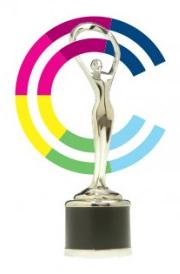


6
Telly Awards Aurora Awards Communicator Awards NSPRA and GSPRA Awards

TOOL KIT COMMUNICATIONS
COMMUNICATIONS PLATFORMS
The Communications team looks forward to keeping our scholars, families and staff in the know. On any of the Communications platforms below, you can find good news about the DCSD community and important information about the District. You, too, can be a brand ambassador by joining the celebration and spreading good news district-wide.
SOCIAL MEDIA
DIGITAL NEWS

COMCAST
OTHER
DSTV Facebook LinkedIn X (Twitter) YouTube Instagram Flickr E-mail Campaigns NewsFlash TV E-MAIL YouTube SchoolMessenger Web Banners Employee Portal Web Stories Digital Flyers Press Release
Channel 24 @dekalbschools
8
Cablecast app
Get Connected & Stay Informed
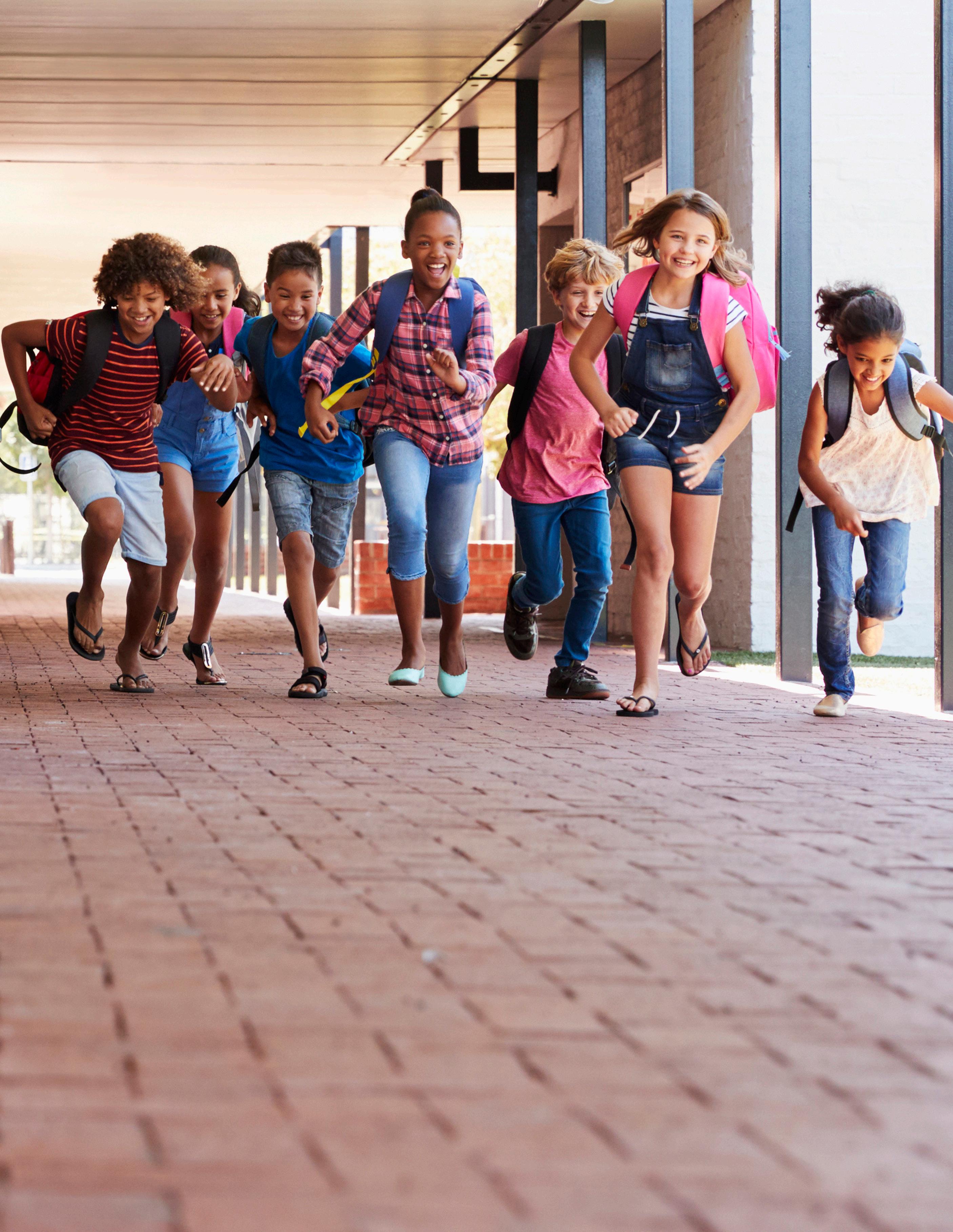
Information Channels:
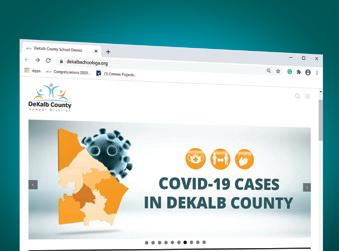
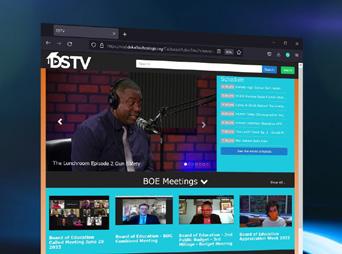
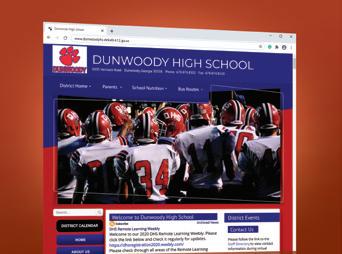


DCSD Website
Updated daily https://www.dekalbschoolsga.org
DeKalb Schools TV (DSTV)
Comcast Channel 24, the CableCast App or @dekalbschools on YouTube for the best in edutainment television.
https://vod.dekalbschoolsga.org/CablecastPublicSite/?channel=1
School Websites
Your school administrator updates
Social Media (Facebook, X (Twitter), YouTube, Instagram) Visit @dekalbschools for daily updates.
School Messenger (Phone, Email, Text)
Important messages shared via text and email. Please check with your school principal to ensure you are set up for SchoolMessenger.
Translations for Parents Whose Primary Home Language Is Other Than English
School Messenger: Text and email will be sent in the preferred correspondence language.
Translation of DCSD webpages: For basic translations of DCSD webpage content, use the Google Translate tool on specific webpages.
Click on the appropriate flag to translate the webpage in your language.
Translation of DCSD documents: Many of our documents are translated in the top 15 DCSD languages. Please contact your local school for more information.
9

HOW TO SUBMIT GOOD NEWS
Every day, DeKalb County School District schools are bursting with activities supporting college and career readiness. Communications can help share that information via the District website and social media channels, DeKalb Schools TV (DSTV) and story pitches to our local media partners.
WHAT MAKES A GOOD NEWS STORY?
Good news comes in all shapes and sizes – and all are valued at the DeKalb County School District. Whether it’s a breakfast for school grandparents, a guest speaker, a schoolwide celebration staff achievement, or a student’s journey to success, these stories deserve to be celebrated through District channels.
How these stories are celebrated, however, can differ. For example, a guest speaker’s visit to your school may be best served by a summarizing article and photographs rather than full video coverage.
To celebrate your good news, you can share it on social media and tag @dekalbschools using the hashtags #iLoveDCSD. You can also email us your story, and we can share it through one of our channels. Today, people use smartphones to shoot movies. Please feel free to use your phones to capture memorable moments.
10
2
HOW TO SUBMIT A JOB TICKET
TO
THE
DEPARTMENT OF COMMUNICATIONS
Log in to Incident IQ by clicking the Help Desk icon in SharePoint or visiting https://dekalb.incidentiq.com.


Select the blue “New Ticket” button to create your request
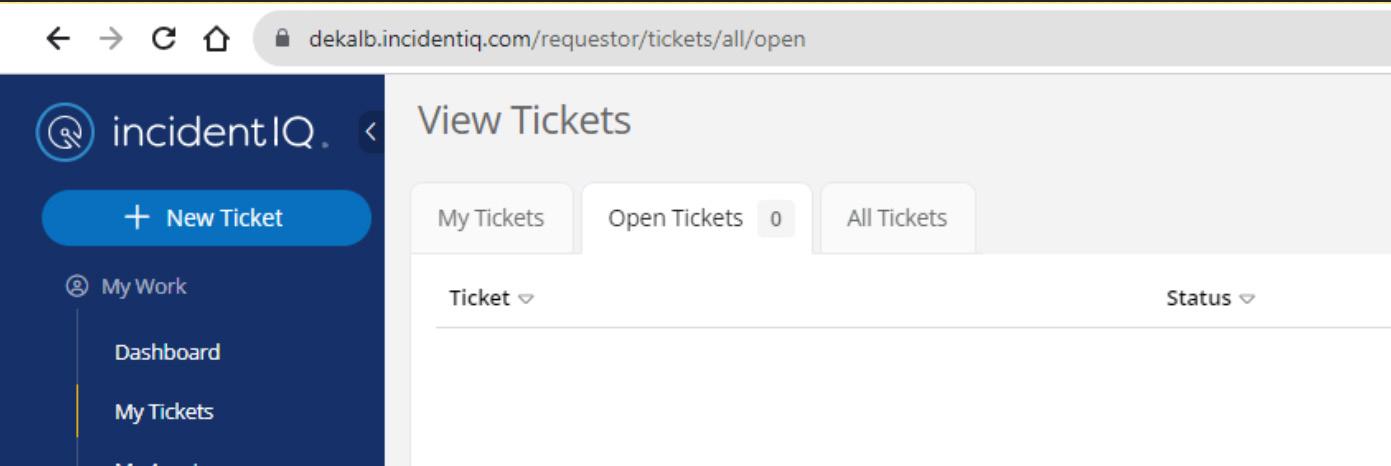
On the “What is this ticket about?” screen, select “Communications Dept.”

STEP
1
STEP
STEP
3
11
Incident IQ

Select the category of your request on the “Select an issue” screen

Fill out the request form. Include as much detail as possible, including any event date, and deadline

STEP
Select “Communications” for the issue category
4
STEP
5
STEP 6 12

















13




















 WEB GRAPHICS
WEB GRAPHICS
14
FLYERS
COMMUNICATION ACTION PLAN
2019-2020
Use this sample to market and promote your event
School: Elementary
Priority Public: Students
School: Elementary Priority Public: Students School Goal: Increase posi�ve communica�on with parents about school experience
School Goal: Increase positive communication with parents about school experience
Key Message:
Key Message:
Strategies Communica�on Tool and ac�vi�es to convey message
Morning/a�ernoon mee�ng to connect about the day
Tell personal stories to make a connec�on with the class
Homework ac�vity: Student lead ques�on to a family member
Take what they have learned at school and lead the parent in an ac�vity
is responsible for implemen�ng?
Facilitator/student Facilitator
Facilitator, student, parent
and
Informal observa�on, student feeling more comfortable; student taking the lead
Student more engaged and excited to be in school
Communica�on with parents about observa�ons
Communica�on with parent and students; survey on ac�vity
Communications
Who
Timeline (When?) Resources (What? Cost) Improvement Indicators Next Steps
Year-long Year-long Year-long Year-long Free Free Free Free Ongoing Ongoing Ongoing Ongoing
Facilitator
student
Download a printable version *Employee portal logging required before downloads 15
SCHOOL MESSENGER
Many of our schoolhouses and District offices use SchoolMessenger. This is another great digital tool for communicating with the DeKalb County School District community. Communications can assist with providing content, such as drafting a statement or letter, and Information Technology can provide technical support.
The SchoolMessenger team provides unlimited technical support and is staffed 24/7/365 with customer service representatives and solutions engineers in multiple offices and time zones throughout North America. When you contact them, you will be working with a SchoolMessenger employee trained and certified to solve your issue. Technicians are available by phone, online chat and online web session, or you can fill out a web form and request that someone call you back at a time that is convenient for you.
*Please note that key communications should be sent via text and email to DCSD families. These communication channels will support multilingual families with translation and interpretation.
15 16
SchoolMessenger Communicate: Trusted By the Most K-12 Schools

From emergency communication capabilities that are ready for any crisis to best-in-class tools for parent, community, and classroom engagement, SchoolMessenger Communicate is the unrivaled
From emergency communication capabilities that are ready for any crisis to best-in-class tools for parent, community and classroom engagement, SchoolMessenger Communicate is the unrivaled notification solution for K-12 schools and districts.
But don’t take our word for it. Ask the leaders of tens of thousands of schools across North America that make SchoolMessenger Communicate the most trusted
But don’t take our word for it. Ask the leaders of tens of thousands of schools across North America that make SchoolMessenger Communicate the most trusted notification product in K-12 education.
SchoolMessenger Communicate consistently outscores others in rigorous evaluations by the most demanding districts. And SchoolMessenger Communicate is shown to positively impact academic achievement, increase parent involvement, reduce absenteeism and dropouts,
SchoolMessenger Communicate consistently outscores others in rigorous evaluations by the most demanding districts. And SchoolMessenger Communicate is shown to positively impact academic achievement, increase parent involvement, reduce absenteeism and dropouts, and save staff time.
Simply put, SchoolMessenger Communicate delivers in the most critical situations, and that’s why K-12
Simply put, SchoolMessenger Communicate delivers in the most critical situations, and that’s why K-12 administrators rely on our notification system more than any other. Learn more about the unsurpassed reliability, performance and features that set SchoolMessenger Communicate apart.
any other. Learn more about the unsurpassed reliability, performance, and feature set that sets SchoolMessenger Communicate apart.
UNMATCHED RELIABILITY & PERFORMANCE
Unmatched Reliability & Performance
When severe weather hits your community, an emergency situation triggers a lockdown, or there’s an unexpected school closure, your notification system must be ready to alert parents. SchoolMessenger Communicate is designed to handle time-sensitive situations just like these, offering unequaled capacity, infrastructure and speed.
When severe weather hits your community, an emergency situation triggers a lockdown, or there’s an must be ready to alert parents. SchoolMessenger Communicate is designed to handle time-sensitive infrastructure, and speed.

We’ve built the largest communications network in K-12 education, along with the most full-featured messaging product for schools, so you can communicate with parents and community members quickly. Successfully send any volume of messages via voice, text, email, social media, desktop pop-up, or website posting, even on a moment’s notice.
We’ve built the largest communications network in K-12 education, along with the most full-featured messaging product for schools, so you can communicate with parents and community members quickly. Successfully send any volume of messages via voice, text, email, social media, desktop pop-up, or website posting, even on a moment’s notice.
SchoolMessenger Communicate delivers millions of messages at once and more than a billion messages per year, with high speed and precise accuracy – including during peak times. That’s why we’re used by the nation’s largest school districts, three branches of the U.S. military,
SchoolMessenger Communicate delivers millions of messages at once and more than a billion messages per year, with high speed and precise accuracy – including during peak times. That’s why we’re used by the nation’s largest school districts, three branches of the U.S. military and numerous first responders. Other systems simply can’t match this dependability.
can’t match our dependability.
For a notification system you can count on in critical situations, choose SchoolMessenger Communicate.
situations, choose SchoolMessenger Communicate.
0
By More Than 50,000
Discover the Reliability and Technology Counted On
Schools
schoolmessenger.com | P: 888-527-5225 | F: 888-333–3454
*Courtesy of School Messenger 17
K-12 Feature Set
you’ll see why K-12 leaders choose SchoolMessenger Communicate more than any other.
Powerful yet simple interface. SchoolMessenger Communicate to be amazingly easy to learn and use. “It just works” is one of the most frequent
SchoolMessenger Communicate to be amazingly easy learn and use. “It just works” is one of the most frequent
you’ll see why K-12 leaders choose SchoolMessenger Communicate more than any other.
DEEPEST K-12 FEATURE SET
Deepest K-12 Feature Set
Integration and automation with more than 130 data sources. SchoolMessenger Communicate is the recognized leader in K-12 data integration. We
Compare SchoolMessenger Communicate side by side to any other notification product in the industry and you’ll see why K-12 leaders choose SchoolMessenger Communicate more than any other.
Compare SchoolMessenger Communicate side-by-side
Integration and automation with more than 130 data sources. SchoolMessenger Communicate is the recognized leader in K-12 data integration. We
Powerful reporting. Select from dozens of standard reports or build your own. Save and schedule reports to automate processes such as “bad number” clean up. Monitor system activity in real time.
you’ll see why K-12 leaders choose SchoolMessenger Communicate more than any other.
software programs like PowerSchool, Skyward, TylerSIS, and many others. Hands-free updating of contact information happens automatically and securely via a variety of methods, and contact lists update as changes are made in the student information system. Save time and ensure that every message is on target.
Integration and automation with more than 130 data sources: SchoolMessenger Communicate is the recognized leader in K-12 data integration. We offer powerful integration capabilities with popular software programs like PowerSchool, Skyward, TylerSIS, and many others. Hands-free updating of contact information happens automatically and securely via a variety of methods, and contact lists update as changes are made in the student information system. Save time and ensure that every message is on target.
Powerful yet simple interface: Staff of all skill levels find SchoolMessenger Communicate to be amazingly easy to learn and use. “It just works” is one of the most frequent comments we hear from satisfied customers.
software programs like PowerSchool, Skyward, TylerSIS, and many others. Hands-free updating of contact information happens automatically and securely via a variety of methods, and contact lists update as changes are made in the student information system. Save time and ensure that every message is on target.
Easy cross-platform communication. from SchoolMessenger Communicate and automatically update your website and mobile app. Keep all of your communications portals up-to-date with minimal time
Powerful reporting. Select from dozens of standard reports or build your own. Save and schedule reports to automate processes such as “bad number” clean up. Monitor system activity in real time.
Powerful yet simple interface. SchoolMessenger Communicate to be amazingly easy learn and use. “It just works” is one of the most frequent
Facebook and Twitter integration. Our innovative social publishing capabilities allow you to post text and audio
Powerful reporting: Select from dozens of standard reports or build your own. Save and schedule reports to automate processes such as “bad number” clean up. Monitor system activity in real time.
Integration and automation with more than 130 data sources. SchoolMessenger Communicate is the recognized leader in K-12 data integration. We software programs like PowerSchool, Skyward, TylerSIS, and many others. Hands-free updating of contact information happens automatically and securely via a variety of methods, and contact lists update as changes are made in the student information system. Save time and ensure that every message is on target.
Easy cross-platform communication. from SchoolMessenger Communicate and automatically update your website and mobile app. Keep all of your communications portals up-to-date with minimal time
Easy cross-platform communication: Send notifications from SchoolMessenger Communicate and automatically update your website and mobile app. Keep all of your communications portals up-to-date with minimal time and effort.
Instant translation to more than 50 languages. Simply type your message in English and have it automatically delivered to each recipient in his or her preferred language. And our innovative quality-assurance tool helps you avoid the downsides of online translation
Instant translation to more than 50 languages: Simply type your message in English and have it automatically delivered to each recipient in his or her preferred language. And our innovative quality-assurance tool helps you avoid the downsides of online translation tools and fine tunes your translation content.
Capture voice responses for use as a “paperless attendance note.” Send surveys through phone and web with an unlimited number of questions.
Powerful reporting. Select from dozens of standard reports or build your own. Save and schedule reports to automate processes such as “bad number” clean up. Monitor system activity in real time.
Facebook and Twitter integration: Our innovative social publishing capabilities allow you to post text and audio to multiple Facebook and Twitter profiles at once.
Facebook and Twitter integration. Our innovative social publishing capabilities allow you to post text and audio Capture voice responses for use as a “paperless attendance note.” Send surveys through phone and web with an unlimited number of questions.
Facebook and Twitter integration. Our innovative social publishing capabilities allow you to post text and audio
Access anywhere. Use our secure message broadcasting apps on your iPhone or Android device to quickly
Interactive notification features: Capture voice responses for use as a “paperless attendance note.” Send surveys through phone and web with an unlimited number of questions.
Access anywhere. Use our secure message broadcasting apps on your iPhone or Android device to quickly
And ask about SchoolMessenger CustomApp, our award-winning school mobile app solution.
And ask about SchoolMessenger CustomApp, our award-winning school mobile app solution.
Instant translation to more than 50 languages. Simply type your message in English and have it automatically delivered to each recipient in his or her preferred language. And our innovative quality-assurance tool helps you avoid the downsides of online translation
Access anywhere: Use our secure message broadcasting apps on your iPhone or Android device to quickly contact parents, even when you’re away from the office. And ask about SchoolMessenger CustomApp, our award-winning school mobile app solution.
Easy cross-platform communication. from SchoolMessenger Communicate and automatically update your website and mobile app. Keep all of your communications portals up-to-date with minimal time
Classroom messaging. SchoolMessenger Communicate addresses the pitfalls of group texting solutions by over, classroom communications. Empower teachers while controlling message frequency and content.
Capture voice responses for use as a “paperless attendance note.” Send surveys through phone and web with an unlimited number of questions.
Flexible management tools. Streamline deployment and support, even for districts with hundreds of schools and thousands of users. Authenticate against LDAPmessages between users.
Instant translation to more than 50 languages. Simply type your message in English and have it automatically delivered to each recipient in his or her preferred language. And our innovative quality-assurance tool helps you avoid the downsides of online translation
Classroom messaging. SchoolMessenger Communicate addresses the pitfalls of group texting solutions by over, classroom communications. Empower teachers while controlling message frequency and content. Complex scenario handling. Control how messages
Complex scenario handling. Control how messages
Classroom messaging: SchoolMessenger Communicate addresses the pitfalls of group texting solutions by offering central office visibility into, and granular control over, classroom communications. Empower teachers and other frontline staff to communicate on student- or parent-specific issues, in a broad range of languages, while controlling message frequency and content.
morning closures calling home phones versus afternoon dismissals calling mobile and work phones). Set district-
Complex scenario handling: Control how messages are delivered based on the notification type (e.g. early morning closures calling home phones versus afternoon dismissals calling mobile and work phones). Set districtwide defaults and even configure individual rules to handle student-specific scenarios.
Access anywhere. Use our secure message broadcasting apps on your iPhone or Android device to quickly
Flexible management tools. Streamline deployment and support, even for districts with hundreds of schools and thousands of users. Authenticate against LDAPmessages between users.
Flexible management tools: Streamline deployment and support, even for districts with hundreds of schools and thousands of users. Authenticate against LDAPaware data sources. Securely publish list definitions and messages between users.
And ask about SchoolMessenger CustomApp, our award-winning school mobile app solution.
Safely email important documents to parents. With application, you can safely and securely send home documents like report cards and progress results. Save huge amounts of money on printing and mailing
Classroom messaging. SchoolMessenger Communicate addresses the pitfalls of group texting solutions by over, classroom communications. Empower teachers
morning closures calling home phones versus afternoon dismissals calling mobile and work phones). Set district-
Safely email important documents to parents. With application, you can safely and securely send home documents like report cards and progress results. Save huge amounts of money on printing and mailing
Flexible management tools. Streamline deployment and support, even for districts with hundreds of schools and thousands of users. Authenticate against LDAPmessages between users.
SecureFile is an optional, fully integrated add-on to SchoolMessenger Communicate.)
Schedule a Demo Today
Schedule a Demo Today
Safely email important documents to parents: With SchoolMessenger SecureFile, our electronic file delivery application, you can safely and securely send home everything from everyday school flyers to sensitive documents like report cards and progress results. Save huge amounts of money on printing and mailing and countless hours of staff time. (SchoolMessenger SecureFile is an optional, fully integrated add-on to SchoolMessenger Communicate.)
SecureFile is an optional, fully integrated add-on to SchoolMessenger Communicate.)
Safely email important documents to parents. With application, you can safely and securely send home documents like report cards and progress results. Save huge amounts of money on printing and mailing
SCHEDULE A DEMO TODAY
For more information, call 1-888-527-5225 or email sales@schoolmessenger.com.
For more information, call 1-888-527-5225 or email sales@schoolmessenger.com.
while controlling message frequency and content. Complex scenario handling. Control how messages morning closures calling home phones versus afternoon dismissals calling mobile and work phones). Set district-
For more information, call 1-888-527-5225 or email sales@schoolmessenger.com.
SecureFile is an optional, fully integrated add-on to SchoolMessenger Communicate.)
Schedule a Demo Today
For more information, call 1-888-527-5225 or email sales@schoolmessenger.com. schoolmessenger.com | P: 888-527-5225 | F: 888-333–3454
Deepest K-12 Feature Set Compare SchoolMessenger Communicate side-by-side
Powerful yet simple interface.
schoolmessenger.com | P: 888-527-5225 | F: 888-333–3454 Deepest
Compare SchoolMessenger Communicate side-by-side
18
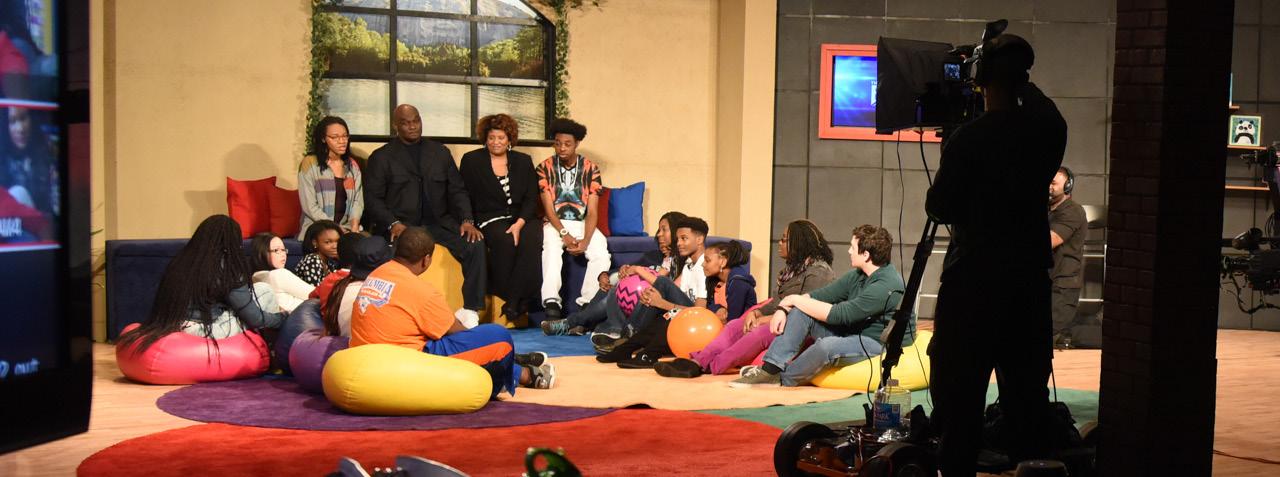
DEKALB SCHOOLS TV
DeKalb Schools TV (DSTV), formerly PDS-TV24, is an educational access channel operated by the DeKalb County School District (DCSD). The channel is available to Comcast subscribers in DeKalb County on channel 24. DSTV Digital is available online at www.dekalbschoolsga.org/communications/dstv/ and can be viewed on any computer, tablet or smartphone with internet access. You can also watch DSTV by downloading the Cablecast app, on YouTube @DeKalbSchools or Video on Demand (VOD), which can be found on our website. We pride ourselves in being the best in “edutainment.” Our goal is to educate and empower while entertaining our viewers.
STUDENT PROGRAMMING
The DSTV team mentors students on producing, scriptwriting and video production. “The Bridge” is an award-winning program where DCSD students produce and write original programming. The purpose of this program is to connect students to pathways for success through interviewing community leaders, research and sharing life experiences on relevant topics. The program also highlights national celebrities, guest speakers and media experts.
BOARD MEETINGS
All open DeKalb County Board of Education meetings are broadcast live as they occur. This is the District’s way of making the meetings accessible to as many people as possible. All regularly scheduled meetings are re-broadcasted and placed on VOD for your convenience.
FAMILY ENGAGEMENT PROGRAMMING
In collaboration with the Family Engagement department, DSTV produces a program geared at empowering DCSD families. “Engagement Now” and our Hispanic show “DCSD Te Escucha” features parents, families, community experts, and District staff who discuss topics ranging from navigating the school system to supporting students with testing.
SPECIAL EVENTS
Throughout the school year, DSTV airs DCSD programs and special events. Those events include DCSD Graduations, the DCSD Spelling Bee, the Helen Ruffin Reading Bowl, Athletic Signing Day, Battle of the Bands, the DCSD Technology Fair, the DCSD Regional Science Fair, the Special Olympics, arts performances, press conferences and more.
OTHER PROGRAMMING
Other original programs produced in-house by DSTV producers include:
• The Bridge
• Music Matters
• Free Game
• Alumni Today
• What’s the Good News?
• Teen Cuisine
• Around the World
• The Magic Library and documentaries on DCSD bands, breast cancer awareness, and more! DSTV also airs programming from partners such as the National Gallery of Art.
To request support from DSTV for events or special projects, please contact the Department of Communications at: www.dekalbschoolsga.org/communications/dstv/
19

DSTV has expanded to all mobile platforms and S mart TVs with the Cablecast App. Watch DSTV on any of these devices:
Apple TV™ & Apple TV 4K Fire TV (Amazon) Roku (TV, Express, Premier, Ultra & Streaming Stick) iOS (Apple) Android Installation instructions link Live link Visit DSTV: https://vod.dekalbschoolsga.org/CablecastPublicSite/?channel=1 20
MEDIA RELATIONS

TOOL KIT
STANDARD OPERATING PROCEDURES
DeKalb County School District (DCSD) is committed to positive public and media relations. To support this commitment, the Department of Communications is designated as the official source to the media for day-to-day communication and all crisis events. Distribution of timely, accurate, and newsworthy information to the community through the public and media or other channels, and assistance in arranging school visits and media interviews, is the responsibility of the Department of Communications, working in cooperation with school administrators and other department supervisors.
Employees have been advised not to respond, comment, or contact the media on behalf of the District. All requests for public information, media interviews, filming, and photography should be directed to DCSD Communications. This guidance is not to silence our stakeholders. Following these procedures ensures that a consistent message and accurate information is shared with our community and reported in the media. For example, if there is a letter that is sent home to families, the following operating procedures should be in place:
5Assess the crisis.
5Craft the letter to be sent home. The regional superintendent also has access to a District bank of letters to help write letters for families.
5Collaborate with your regional superintendent, who will confirm with District Communications that the message is clear and concise.
5District Communications is now aware of what was communicated to families in the event of a media inquiry
5Communications confirms and collaborates with the regional superintendent or content expert, such as a cabinet member.
5Communications crafts a statement with accurate information and issues the statement. News releases and statements are only issued by DCSD Communications with the approval of the superintendent or DCSD leadership team. If the media contacts you or your school, immediately refer them to DCSD communications.
5If the media shows up on your school property, have
the School Resource Officer (SRO) move them from school property and across the street. If you can get the reporter’s name to share with the District Communications team, this would assist us with contacting the reporter to find out why they have come to your school. We ask the media to alert Communications before coming onto school property, but this does not always occur. When it does not, Communications follows up with the reporter to kindly remind them to follow the DCSD protocol and contact Communications first. This is critical in not causing panic and disrupting the school day for many of our students and families.
BOARD OF EDUCATION POLICY KB:
The DeKalb County Board of Education wishes to promote a positive environment in DCSD with an awareness of, involvement in, and support for the District and its educational mission among all District stakeholders.
The Board believes that the schools are strengthened by the support of informed DeKalb County citizens. This support is based on knowledge of, understanding about, and participation in the aims and efforts of the District. A strong communications program is essential to increasing knowledge of, commitment to, and advocacy for the District and its mission and goals.
To this end, the Board affirms its commitment to:
1Keeping the citizens, staff, and other vital stakeholders regularly and accurately informed about policies, programs, problems, and planning of the District.
2Soliciting the advice and counsel of parents, students, staff, and others on fundamental issues through appropriate channels (such as Parent Teacher Associations, advisory councils, and other community forums).
3Charging the Department of Communications with carrying out this policy as an integral part of regular activities and responsibilities.
4Cooperating with the news media as the primary purveyors of public information, recognizing their right to all the facts and their obligation to publish them in a responsible manner.
22
MYTHS ABOUT THE MEDIA
Myth: The media is bad
The media is not bad. In fact, many writers, reporters, and producers are parents and previous students of DCSD and want the best for the District. Sometimes the news story is positive, and sometimes it does not show DCSD in the best light. What is more critical to the District is that accurate information is shared.
When the news story is negative, do the following:
5Share the facts with DCSD Communications so we can attempt to correct anything that was not accurate.
5Share the facts on your social media. Keep in mind: that opinions are not facts. It’s essential to be ethical and truthful when sharing a narrative.
5Share your news with DCSD Communications so we can share the story on District social media channels.
5Continue sharing all the good news you have on your channels and tag DCSD Communications so we can repost and reshare.
Myth: Communications is responsible for sharing the good news of the District
DCSD is a considerable village. We are ALL ambassadors of sharing the good news. The District is responsible for sharing District news and is not always aware of the good news in all the schoolhouses.

Myth: Everything reported in the media is accurate
While the media are our partners, sometimes we receive media inquiries that take time to get answered. The media will often report on deadlines, and the District must get the answers from principals, teachers, regionals, and other cabinet members who are busy with other areas of the school day. A story might not have updated or accurate information.
Myth: The District purposely withholds information
The superintendent believes in complete transparency. Therefore, the Communications Department team has no hidden agenda. Unlike partners who have deadlines, ratings, or want to distribute a story their way, the District is fully committed to sharing facts and critical information that all families can understand. While stakeholders might disagree with our response to matters, our plan is always to be honest and share the facts.
As part of our strategic plan and goal, we know that accurate information will lead to improved culture and climate and, thus, academic excellence for our scholars. We are DCSD proud, and it starts by following procedures and working together.
23
MARKETING BRANDING IDENTITY

TOOL KIT
SCHOOL CO-BRANDING
Branding is the relationship an organization or product develops with key audiences. Branding is the emotional and subjective response to seeing a logo or image or hearing a name mentioned. Messaging, behavior, and visual images communicate the brand. Branding DCSD is essential to creating a stronger, more productive relationship with stakeholders. Branding benefits:
Consistency 0Trust (Stakeholders know what to expect from us);
Authority 0Value (Quickly conveys authorship of communication);
Respect 0Pride (Earns more credibility with stakeholders);
Enthusiasm 0Support (Shares our excitement and positivity).
The DeKalb County School District (DCSD) school color palette provides the use of 20 colors for school branding. Use the color(s) that best fit your school colors on apparel and other marketing items.
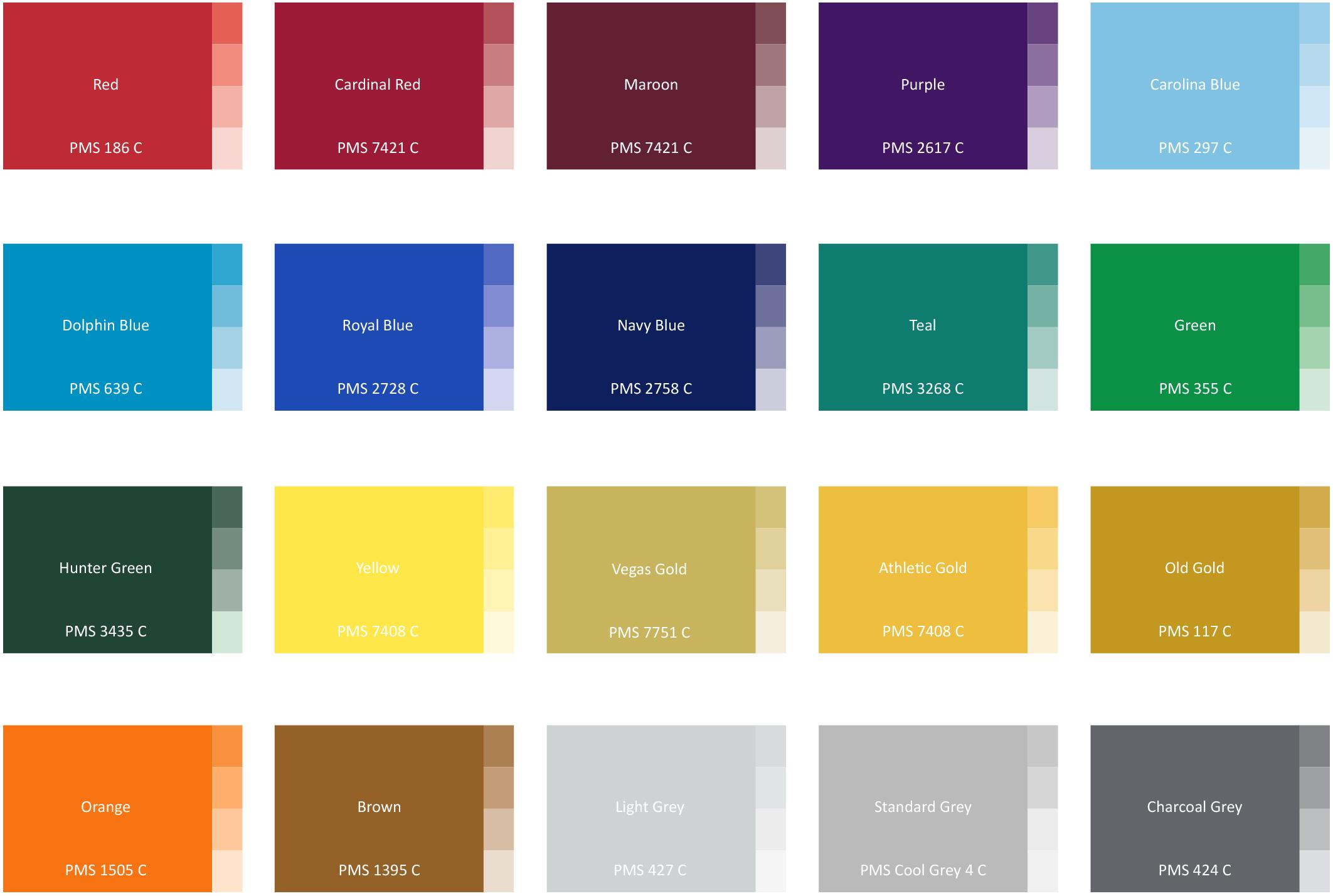
Please Note: Colors not listed but not excluded are black and white.
SPECIAL PURPOSE PUBLICATION 25
LETTERHEAD STANDARDS
The Communications Department has worked with schools and District offices to provide co-branded messaging and designs to ensure consistency and brand identity. However, Superintendent and Board of Education letterhead usage is prohibited. Use co-branded letterhead provided by the Communications Department, which includes your school logo and the DCSD logo. Central Office staff should use the standard letterhead or department letterhead.
Assets and collateral such as email templates, websites, printed marketing materials, business cards, and social profile pages should be consistent with the brand guidelines.
It is recommended to use Calibri, Cambria, Garamond, Georgia or Arial, which are all great options for readable fonts.
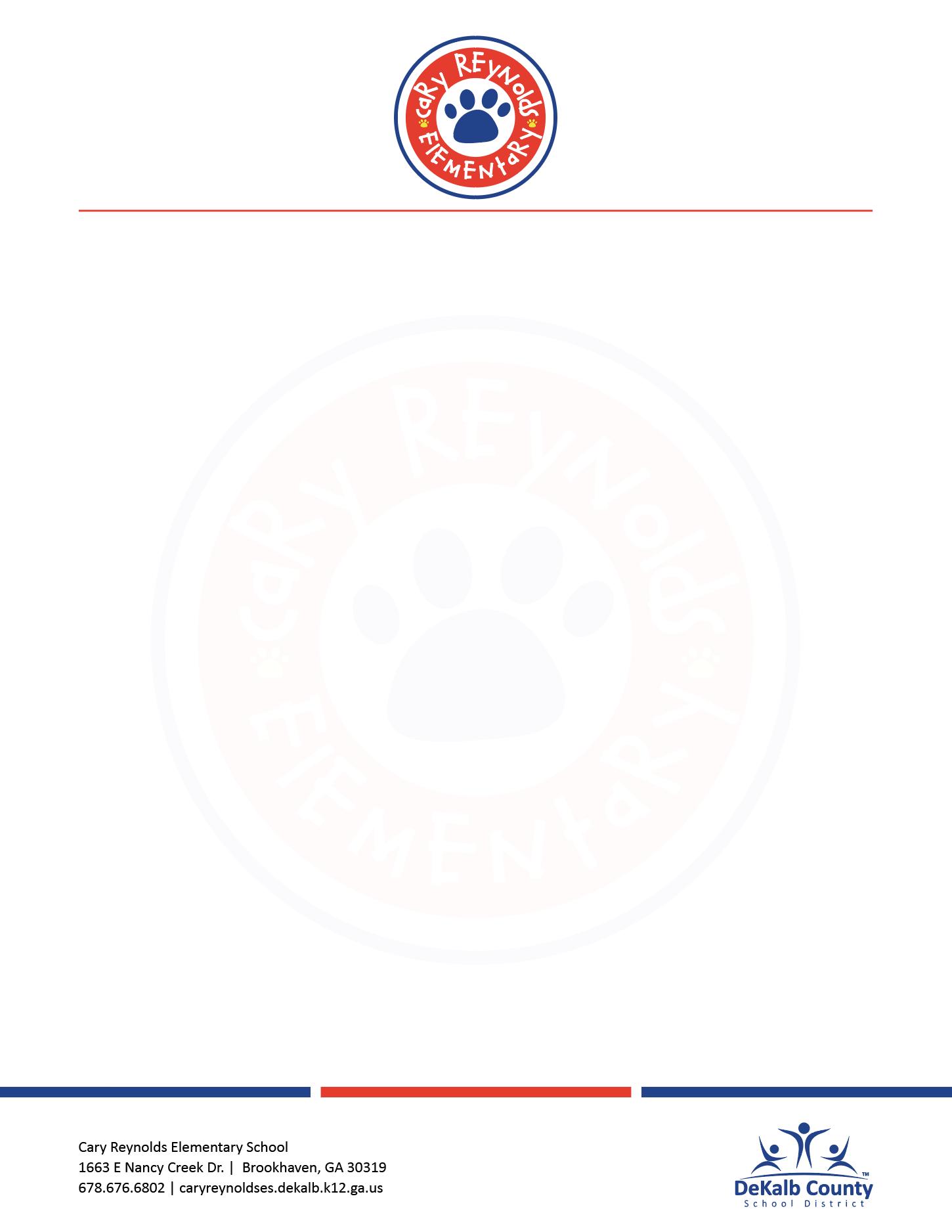
Dimensions: 8.5”W x 11”H
26
SCHOOL BUSINESS CARDS
The front of the school business card will have employee contact information along with the DCSD logo and school logo as shown. The DCSD logo and design element colors are to match the school’s brand.
The back of the business card will display distict social media and broadcast platforms.
Dimensions: 3.5”W x 2”H DCSDLogo
First Name, Last Name Job Title
School/Building Name
Address Line 1 - Street Address
Address Line 2 - City, State, Zip Code
District Email Office Number & Fax or Cell Phone Number
Note: The inclusion of prefixes is prohibited. Please limit the number of suffixes to two or three. Under no circumstances should the district business cards be personalized. School Logo www.dekalbschoolsga.org

Facebook, X, Instagram, DeKalb Schools TV Logos District Website
27
LOGO USE
Co-branded DCSD logos are used for school signage and the designated school website. The joint logo will show the school logo first (left) and the DCSD logo second (right), as shown below.
By keeping school branding so closely related to that of the overall DCSD brand, each school benefits from the recognition of the district and in turn helps with the overall consistency and impact internally and externally.
Note: The primary school co-branded logo will display the DCSD logo in full color. Use this version on school signage and the district website.
Note: The secondary school co-branded logo will display the DCSD logo in a color from the school color palette to match your brand. Use this version on school stationery and marketing items such as t-shirts, stickers, flyers, etc.
28
SCHOOL FAX COVER
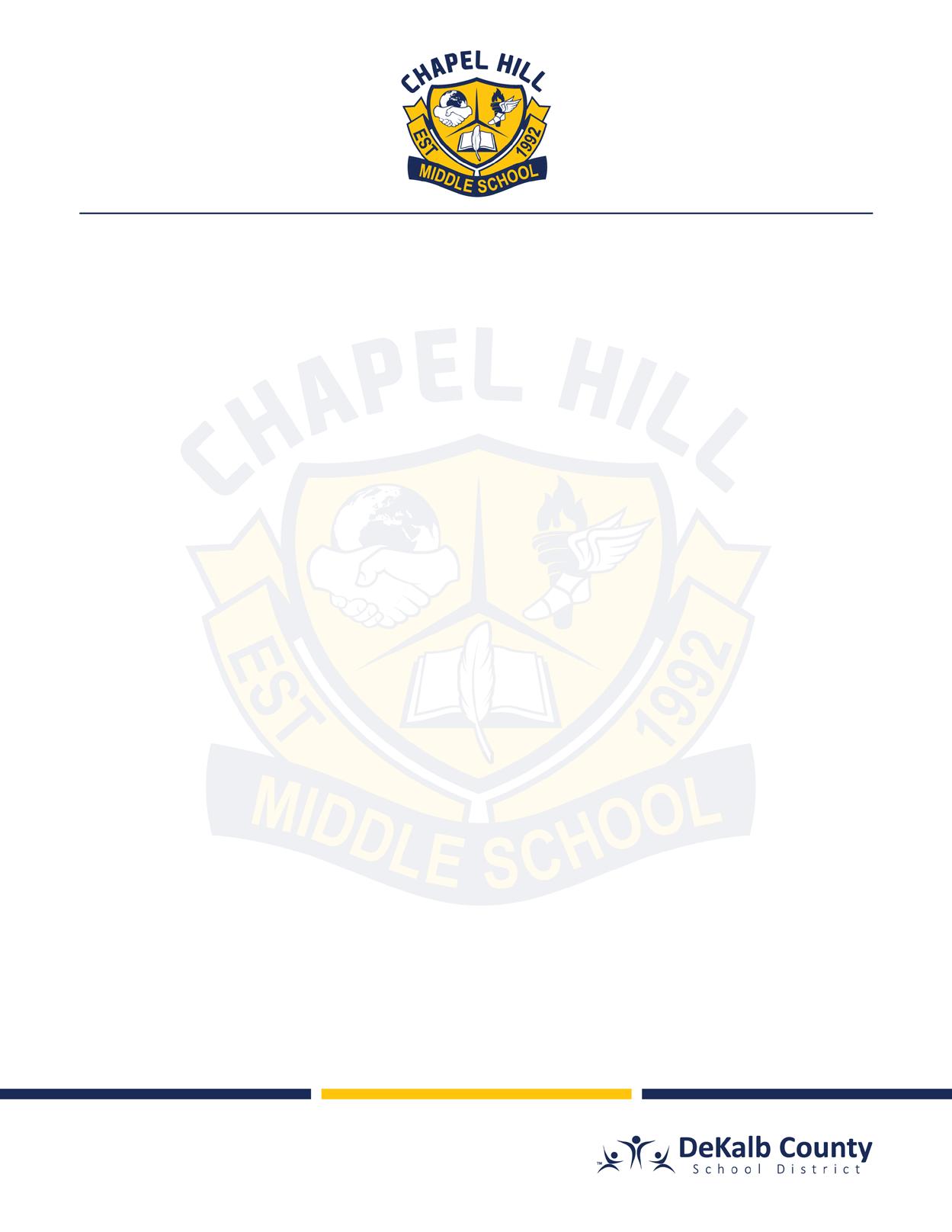
The school fax cover sheet template will display the school logo and DCSD logo in the lower right corner as shown. The DCSD logo and fax cover sheet design elements are to match the school’s colors.
Under no circumstances should the co-branded school fax cover sheet be personalized.
Chapel Hill Middle School Street Address | City, State, Zip Code 000 000.0000 | schoolname.k12.ga.us
Date: Address: City: State: Zip Code: Phone: To: Fax #: From: Fax #: Number of Pages: Re: Message:
29
Fax Cover Sheet
Dimensions: 8.5”W x 11”H
SCHOOL ENVELOPE
The co-branded DCSD logo is to be positioned as shown. The school name and address is to be positioned below the logo as shown.
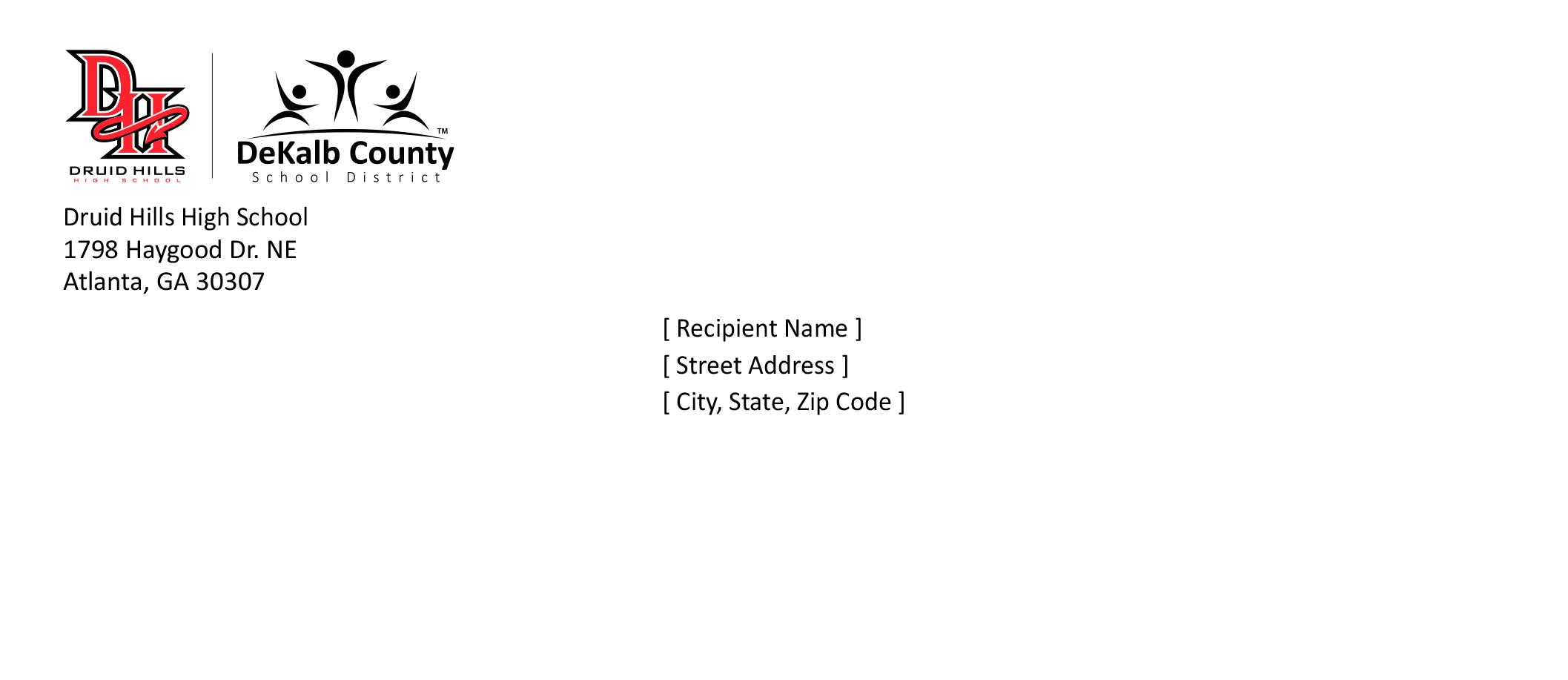
Dimensions: 9” x 4.125” (#10 Envelope)
30
BEST PRACTICES AND TIPS

TOOL KIT
BEST PRACTICES FOR EVENT MARKETING
KNOW YOUR AUDIENCE
Consider the demographics of potential attendees like age, gender, race or religion and how it will affect attendance.
START EARLY
The earlier people know about your event, the more time they will have to add it to their schedule and share with others. The ideal promotional time for an event is six weeks.
MAKE IT SHAREABLE
Details like who to contact, where to find more information, event address and event start time should not be left off the flyer
CREATE ADS
Increase your attendance numbers and diversify your target audience by placing ads in your local newspaper, websites or on social media.
FIND A LOCAL SPONSOR AND/OR VENDORS
Sponsors can help carry the financial load that comes with planning an event. Sponsors can also help in providing exposure and opportunity for those in attendance. Vendors provide your audience with resources they can find useful and also create engagement.
FOLLOW UP
Tracking your attendance and sending sur veys post-event about your audience's experience, will allow you to more accurately organize future events.
32
BEST PRACTICES FOR FLYER DESIGN
BEST PRACTICES FOR FLYERS
USE AN INFORMATION HIERARCHY
The most important information should be the largest. Supporting details should be included in decreasing font size.
STICK TO 2 OR 3 FONTS
Using only 2 or 3 fonts in your design unites the flyer and information. Too many fonts can be distracting.
DON’T FORGET THE DETAILS
Details like who to contact, where to find more information, event address and event start time should not be left off the flyer.
GREAT IMAGES MATTER
A picture says 1,000 words but a great picture says 10,000 words. Choosing non-blurry, copyright-free images or clipart will enhance your design. Don’t stretch or distort images or logos.
CHOOSE A COLOR SCHEME
Staying within the same color temperature or choosing a color scheme helps tie your flyer together (warm colors, cool colors, grayscale).
LEAVE SOME BREATHING ROOM
Don’t clutter your flyer with too much text or images. Leave space for the reader’s eyes to rest.
33
VIDEO RECORDINGS
Video is a powerful tool that engages and influences scholars, parents and staff. Take advantage of capturing students working on a garden, athletic events, parent meetings, tutorials and more. Video can simplify topics and provide a connection to the viewer.
If you need ideas on how to capture instruction or fun ways to engage students and families, YouTube is an invaluable resource. Visit other school districts and take note of how they showcase events and capture video.
Studies show that most people will not watch for more than two minutes. NSPRA said it best: “Today’s digital media consumer has a short attention span. The number-one thing consumers value most is their time. They don’t want to waste it.” Simply put, keep videos short and exciting, especially if they’re for social media.
When shooting with a mobile device or smartphone, get as close to the subject or action as you can without zooming in. Be mindful of your surroundings so that you are not picking up other footage you don’t want. Use the eyes and face as a way to connect the viewer with the subject.
Capturing video and editing are different skillsets. You might be great at shooting video and need more support with editing, but editing isn’t as hard as it seems. You should get familiar with the social platforms that you’re using and, again, use YouTube as a resource. Instagram allows you to edit with filters, for example. Other options include iMovie for Mac users and Movie Maker for Windows users.
When uploading your video, remember, Facebook gives preferential treatment to videos uploaded directly to their site.
Remember to include names, credits, logos and titles (lower-thirds) and to proofread your work. You don’t want a great video to be wasted because of a small typo. Always have a second eye to check your work.
Important: Please note that you must have a media release on file before taking videos of students.
34
CELLPHONE VIDEO RECORDING TIPS:



Use the landscape orientation and not portrait orientation while recording with your smart phone.
Keep videos short for social. Consider keeping each clip to around 15-20 seconds in length.
Get creative with your angles and shoot what’s interesting to capture your audience.

Get familiar with apps so that you can edit your video such as iMovie so you can edit your video.

Avoid shaky hand-held footage by stabilizing your smartphone.

Ensure that your audio is clear.
35
SOCIAL MEDIA GUIDELINES

TOOL KIT
SOCIAL MEDIA GUIDELINES FOR STUDENTS
DEPARTMENT OF COMMUNICATIONS, UPDATED JULY 2019
The digital age has transformed how people communicate, learn and live since the beginning of the 21st century. The DeKalb County School District (DCSD) is preparing 21st century leaders to succeed in an ever-changing global society through classroom instruction and experiential learning. Social media and digital communication are key components to everyday life that must be understood and used correctly.
Our Digital Dreamers comprehensive technology program illustrates DCSD’s commitment to increasing students’ technological footprint and bridging the digital divide.
These Social Media Guidelines provide information about how to safely and responsibly use social media at school, at home and on the go. The information will include recommendations for appropriate social media communication, ideas on how to create a healthy digital image and procedures for protecting yourself and your privacy online. These guidelines should be used in conjunction with the DeKalb County Board of Education’s Acceptable Use Policy (AUP).
If you have feedback about these guidelines, please email communications@dekalbschoolsga.org with the subject “Social Media Guidelines Feedback.”
37
DEFINITION OF SOCIAL MEDIA
Social media is the collective of online communications channels dedicated to community-based input, interaction, content-sharing and collaboration. Some examples of social media sites or platforms include Facebook, Flickr, GroupMe, Instagram, LinkedIn, Pinterest, Reddit, Snapchat, Tumblr, X, and YouTube.
BE RESPECTFUL
It is important to represent yourself in a positive manner online. This means thinking about what you post online and considering how it would look to people you know and don’t know. Respect is a two-way street between you and others. Would your post or comment look good to a college admissions officer? To a future employer? Your parents or teachers? Assume that someone is always observing and monitoring your online actions.
Sometimes social media will be used for a class assignment and the same classroom rules will apply online as they do at school. For example, if you would not make fun of a classmate at school, you shouldn’t do it online. Unless your teacher gives you permission, do not expose content to audiences for whom it was not intended.
AVOID NEGATIVITY, PROFANITY AND CYBERBULLYING
Being responsible for the content you post is important in all social media environments whether at home or at school. Only post accurate information and be accountable for what you say. There is no such thing as being anonymous online. Through an internet IP address your identity can always be determined.
Cyberbullying happens when a person bullies another through electronic technology. There can be a fine line when it comes to cyberbullying. What you consider to be harmless teasing can be hurtful to others.
Cyberbullying includes:
• Intimidating or threatening persons
• Threats against the school or person’s property
• Using another person’s log-in or password to send inappropriate messages and images
• Creating fake profiles of other persons
• Creating websites to embarrass, threaten, or socially isolate another person
• Circulating offensive photos or videos
• Texting offensive messages
• Creating rumors and posting false information about people
When social media becomes a disruption, even when a post is made during personal time, the school may need to get involved and disciplinary action can be taken such as a parent conference or suspension. In fact, there is no right to privacy when using school-related social media. The school may review what you post at any time. To prevent infractions like this from taking place, review the Student Code of Conduct which prohibits poor behavior and inappropriate digital communications as well.
36
38
GET PERMISSION
Asking for permission before posting is important on social media. That picture that you took of a friend may not be something they want shared online. This applies to pictures of strangers as well. You should always ask for permission before taking a photo or video of others. Getting permission before posting is also important because of copyright laws. You can be sued for using photos, songs, logos or other content that does not belong to you. You can avoid legal action by making sure all content that you post was created by or belongs to you.
PROTECT YOUR IDENTITY AND PRIVACY
You are in control of how much information is shared online. There are privacy setting defaults on each social media platform that can be adjusted to control what information is shared publicly. You might decide to have some of your posts private such as posting about class grades or college choices, or public posts such as canceled games due to rain. It’s always important to stay updated with privacy changes being made by social media providers. Some ways you can protect yourself and your privacy online are:
• Only accept friend or follow requests from people you know
• Always log out when using a shared computer or device
• Don’t share personal details like your address, date of birth or phone number
• Limit sharing your location or where you are all the time
• Never share your password with friends or others
• Never share your banking information or social security number
Ultimately, your parents are responsible for what you do online when you are a minor. Be open to your parent suggestions about what information should remain private and what information can be shared publicly even when your parents are not as social media savvy.
FOLLOW SITE RULES AND POLICIES
Each social media site has its own terms of use or agreement. Before signing up to join a site or platform, it is important to review the expectations. It is also important to review updates if or when the policies change. Violating a site or platform’s usage agreement can lead to your account being suspended or even terminated.
REPORT PROBLEMS
Part of being a good digital citizen is reporting problems you may see online. Each social media platform has a feature where you can anonymously report disruptions to a positive digital environment. Common issues that should be reported are account impersonation, bullying, criminal activity, harassment, hate speech, inappropriate photos, spam and violence.
If you believe that you or someone you know is being cyberbullied, report the behavior by telling a parent or guardian, school staff member or trusted adult. If you suspect immediate danger, call 911. It is best not to respond or retaliate against cyberbullies.
In the event you experience cyberbullying, it’s a good idea to have a plan in place. Never respond to offensive online behavior and save any messages that could be used as evidence when you report the behavior. You can also “block” the cyberbully if they are sending messages directly to you. For more information on reporting cyberbullying, go here: http://cyberbullying.us/resources/teens/.
HAVE FUN
Social media was created to connect different people and views from across the world. It can be a place to share with family and friends or get to know about your favorite brands or celebrities. You can have fun by participating in trending topics, dance challenges and commenting during your favorite television show. Social media is a powerful tool when used correctly.
39

DIGITAL CITIZENSHIP
In the digital world, what you post online can define who you are. Being a good digital citizen means positively contributing to the digital space, respecting other people’s views even if you don’t agree and reporting issues that disrupt a positive digital environment.
Your digital footprint or reputation is left online when you post on blogs, upload videos and pictures or even leave comments on websites. No matter what your online actions are, consider that what you share can leave a permanent record even if you click delete. Therefore, be extra careful about what you share online and with whom you share content.
The DCSD Digital Dreamers program and 1:1 device implementation for 6-12 grade transforms how students learn and teachers teach. Having a device to use for school is a privilege that carries responsibilities. The DCSD Acceptable Use Policy (AUP) outlines rules and guidelines for using DCSD devices and network resources. It outlines what you can and cannot do with school issued technology. Learn more about Digital Dreamers at: www.dekalbschoolsga.org/digital-dreamers
40
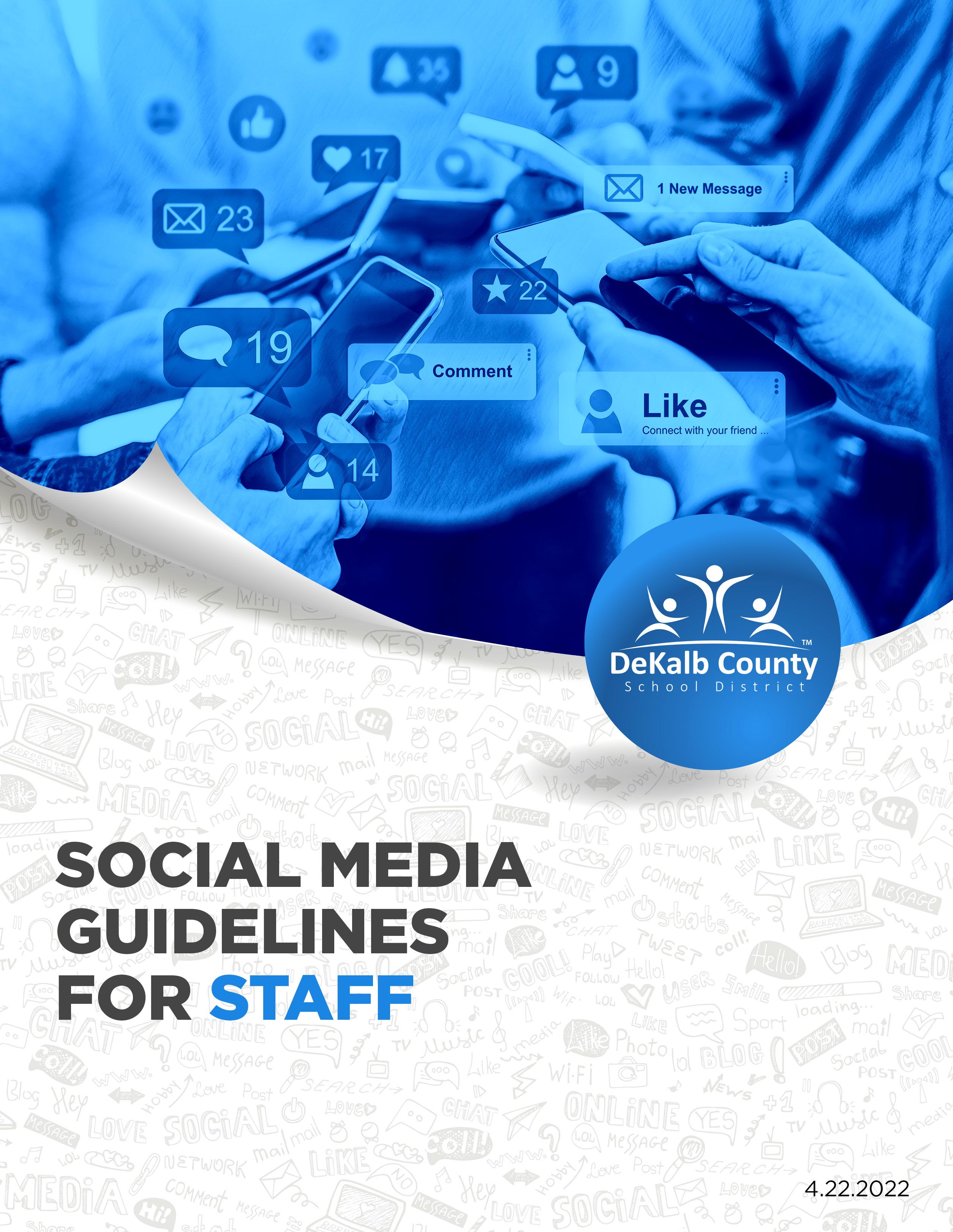
2023-2024 41
Dear DeKalb Schools Community,
In the 21st century, students use technology more than ever before. They grow up with mobile devices at their fingertips, and the Internet has become a social playground. Because social media is instant, easy and a common way of sharing information today, it is imperative that we practice safe social networking.
The DeKalb County School District (DCSD) is providing guidelines for students and employees on the use of social media inside and outside of the classroom.
While the DeKalb County Board of Education provides an official Internet Acceptable Use Policy and policy regarding social media accounts found at the eBoard website on www.dekalbschoolsga.org, our guidelines offer a quick reference for safe, online etiquette.
Engagement, collaboration, learning and sharing in digital environments are here to stay and continue to make an impact on student achievement Because technology changes rapidly, our community must work together on how to engage on social media platforms responsibly. DeKalb County School District will continue to provide activities and resources that support social media engagement, another important method of communication for keeping our community in the know.
SOCIAL MEDIA GUIDELINES FOR STAFF
A. Introduction/Purpose
1. Our Social Media Guidelines offer professional recommendations and practices for communication. We want to be sure that our DCSD employees use digital tools in a safe, responsible manner that helps students reach goals.
Please refer to the DCSD Website and Online Social Media Publishing Guidelines (Policy IFBGB) DCSD Website and Online Social Media Publishing Guidelines (Policy IFBGB) for more information.
B. Establishment
DCSD will establish and manage social media sites, such as Twitter, Facebook, YouTube, Flickr and Instagram. Appropriate content for these sites includes:
• DeKalb County School District information
• DeKalb County Board of Education information
• Information from individual schools
• Teacher and classroom information
42
• Information from our education partners
• Information from extracurricular organizations
C. Professional Social Media Use
1. Professional Email Accounts vs. Personal Email Accounts
For social media, our DCSD employees should maintain separate professional and personal email addresses. The regular use of a personal email address for professional purposes may result in DCSD considering the personal address a professional account.
2. Communication with DCSD Students
All DCSD employees who work with students and professionally engage with them on social media sites should:
a. Create social media sites that address reasonable instructional, educational or extracurricular topics.
b. Notify our DCSD parents each school year of the professional social media activities set up for their children’s participation.
3. Guidance for Professional Social Media Sites
a. All DCSD employees should treat the professional social media space like a classroom or professional workplace. The standards for conduct in DCSD professional settings also apply to professional social media sites.
b. All DCSD employees should exercise responsibility, caution, sound judgment and common sense when using professional social media sites.
c. When setting up professional social media sites, principals or their representatives and our employees should responsibly consider their intended audience and the appropriate level of privacy.
d. Individual schools, teachers, students and extracurricular organizations may create social media accounts. They should first obtain a principal’s approval and notify the Communications Department of the account
e. Principals and their representatives must maintain a list of all professional social media accounts in their schools.
f. School-based social media accounts on Instagram, Twitter, YouTube and Facebook should cross-collaborate with our DCSD central office’s social media accounts. While each school owns its brand, each also belongs to our larger organization. We encourage principals and their representatives to engage with and support DCSD social media sites
• Student projects
43
by, for example, sharing or retweeting District news releases or events on their school sites.
g. To differentiate professional DCSD social media sites from personal sites, accounts should include language and logos that clearly identify them as professional sites.
h. Content shared on social media should have a reasonable and positive relationship with the mission and function of DCSD. An example: Sharing public library events supports the partnership in education with DCSD and DeKalb County Government.
i. Our DCSD employees should use privacy settings for their intended audiences. Limitations to privacy settings exist, however, and DCSD employees should be aware that social media sites can change their default privacy settings and other functions at any time.
j. Professional social media communication must comply with DCSD policies and laws on disclosing of confidential information, cyberbullying, student privacy, threatening language, and other school place issues.
k. DCSD employees may post no student’s personally identifiable information on professional social media sites available outside the classroom. An example would be posting student information to a “buddy” class in another country. Posting any image of a student online requires a written, signed media consent form for the featured child. Consent forms are on file at our schools and may be found online at https://www.dekalbschoolsga.org/communications/resources-forms/
4. Monitoring of Professional Social Media Sites
a. Our DCSD principals and representatives are responsible for monitoring their employees’ professional social media sites. Each school must monitor its own sites. Monitoring responsibilities include regular reviews of site content and reports of any questionable communications.
b. Our DCSD principals and representatives reserve the right to remove postings or disable pages on sites that do not adhere to laws or DCSD policies.
5. Inquiries
a. Media inquiries received on sites should be referred to the DCSD Office of Communications: communications@dekalbschoolsga.org
E. Personal Social Media Use by Our DCSD Employees
1.
Communication with DCSD Students
To maintain a professional relationship with students, DCSD employees should not communicate on personal social media sites with students currently enrolled in DCSD schools. If
44
you are contacted, provide your district email address and explain that all inquiries should be emailed to your work email address.
2. Guidance Regarding Our DCSD Employees’ Personal Social Media Sites
DCSD employees should exercise caution, common sense and professionalism when using their personal social media sites.
a. We encourage DCSD employees to use appropriate privacy settings to control access to their personal social media sites. Be aware, however, that privacy settings have limitations, and private communication on the Internet can easily become public. Also, social media sites can change default privacy settings and other functions at any time. Our employees are responsible for understanding and complying with the rules of any social media sites they use. Personal social media sites that address workplace business may be subject to Open Records laws.
b. We do not recommend that our employees “tag” photos of other DCSD employees, volunteers, contractors or vendors without prior written permission from these people.
c. We prohibit the posting or disclosure of students’ personally identifiable information or confidential information on personal social media sites if it violates DCSD policies or any laws.
d. Employees should never use the DCSD logo or imply that their personal social media sites speak in an official capacity for DCSD. We do permit use of the DCSD logo when it automatically posts on personal social media sites such as LinkedIn.
e. We strongly recommend that DCSD employees maintain transparency and be honest about their identities when they post on social media. When employees identify themselves as DCSD employees, they must be clear that they express individual and personal views, not necessarily the official views of the DCSD.
F. Applicability of DCSD Policies and Other Laws
1. The DCSD Guidelines supplement, but do not supersede, existing DCSD policies and laws. Our DCSD social media users must comply with all applicable federal, state and local laws, including the Children’s Online Privacy Protection Act (COPPA), and the Family Educational Rights and Privacy Act (FERPA).
2. Our Guidelines do not serve as a code of conduct for social media use and do not constitute a separate basis for potential discipline. However, all existing DCSD policies, regulations and laws that cover employee workplace conduct also apply in the social media environment. These include the DCSD Website and Online Social Media Publishing Guidelines (Policy IFBGB).
45
G. Additional Inquiries
This document provides general guidance but does not cover every potential social media situation.
H. Frequently Asked Questions (FAQ) General
1. Why does the DCSD issue guidance for using social media?
• Social media technology offers many educational benefits. We issue these guidelines to encourage professionalism, responsibility, safety and awareness by our employees who use social media. Our guidelines also recommend best practices for employees who use social media for professional or personal communication.
2. How may DCSD parents, students and employees give feedback on these guidelines?
• We welcome feedback on our guidelines and FAQs. Because technology and best practices change rapidly, we systematically review and update guidance. If you have any feedback or a suggestion, please send an email to our District email address: communications@dekalbschoolsga.org.
3. Do the guidelines apply to all DCSD employees or just those who work in schools?
• Our guidelines apply to all DCSD employees.
4. What are common types of social media?
• Blogs. Short for “web-logs,” blogs function as ongoing journals, where users make systematic entries. Typically, bloggers “tag” entries for easy online searches. Most blogs allow readers to comment. Examples: Blogger, WordPress.
• Microblogs. These blogs, as the name implies, have shorter posts, typically limiting the number of typed characters allowed. Microblogs are good for status updates and quickly communicating information to “friends” or “followers.” Examples: Twitter, Tumblr.
• Networking sites. These allow people to connect with each other to explore common interests and pursuits. Examples: Facebook, LinkedIn, Google+, Twitter, Instagram.
• Photo/Video sites. These allow people to share videos, images, slideshows and other visual media. These sites often allow viewers to comment and post their own content. Examples: YouTube, Vimeo, Flickr, Instagram, Tik Tok.
5. The guidelines state that they supplement, not supersede, DCSD policies and the law. What does this mean?
46
• Social media use should always comply with our DCSD policies and all laws. Before our DCSD employees use a student’s name or other personally identifiable information on social media, for example, they should be aware of policies and laws that might apply to the situations of individual students.
Personal Social Media Sites
6. Why do you recommend that DCSD employees have separate professional and personal social media sites and email addresses?
• All DCSD employees should keep their personal and professional online communications separate. Professional social media is often work-related. Personal social media could contain personal and business content. Still, keeping separate accounts and login information is recommended.
7. May DCSD employees use their personal social media accounts to communicate with their DCSD colleagues?
• Our guidelines don’t address communication among our employees on personal social media sites. Even so, we encourage our DCSD employees on personal social media to use appropriate privacy settings to control access to their sites and only use personal sites on their own time.
8. I have a personal website where I post book reviews. What best practices do you recommend for DCSD employees with personal social media sites like mine that are professional in nature and may involve students but aren’t directly related to the DCSD?
• Keep in mind that even when a DCSD employee is “off the clock,” students see him/her as an authority figure. Employees should not allow students access to their personal social media sites. For example, don’t accept friend requests from students.
Employees
9. What if DCSD employees already use social media for professional or personal purposes?
• For professional social media use: DCSD employees should make sure their use aligns with the DCSD Social Media Guidelines and these FAQs. Any use not consistent with these guidelines should be altered or amended in a reasonable period of time to conform to our DCSD policies and the law. Employees with links from a professional social media site to a personal email address should transition the site to a professional email address.
• For personal social media use: Our guidelines recommend that DCSD employees who use social media for personal purposes should not allow any current DCSD students access to those sites.
47
• Our employees should periodically review the Social Media Guidelines and FAQ (we’ll update them as needed) to make sure they remain up-to-date on recommended practices.
• Our DCSD central office and schoolhouses provide social media resources for employees who use social media for professional purposes. Check the Employee Portal for webinar trainings.
10. Who monitors professional social media sites? How frequently?
• Our guidelines recommend that professional social media sites be regularly reviewed and monitored by principals and their representatives. The specific frequency and level of review depend on the particular characteristics of the site. Interactive sites that allow comments and posting, for example, should always be monitored more closely.
11. If DCSD employees want to develop professional social media for their classrooms, what should they do?
• First, our employees should review the Social Media Guidelines and FAQs periodically to be familiar with the content and any updates. Then they should research and familiarize themselves with the social media site they intend to use.
• If students will be using the proposed professional social media, our employees must review the site’s regulations and determine the age children are allowed to use it. An example: Let’s say a female teacher plans to create a Facebook page for her third-grade class. She will learn that Facebook requires users to be age 13 or older. She will need to find some other tool. Employees should also review the requirements of the federal Children’s Online Privacy Protection Act.
• Our employees should know the privacy and viewing settings for a social media site. We recommend, where possible, that our DCSD employees establish groups or pages, rather than individual profiles, for educational purposes.
Guidance for School Leaders
14. How should principals address parents who have concerns about their children’s use of social media?
The DCSD recognizes social media’s powerful benefits for students, teachers and school communities. Many, and probably most, schools now use these 21st-century tools. Our own schools should inform parents of the opportunities social media provide for college and career
48
readiness. In some cases, schools may need to “market” these tools to parents unfamiliar with their benefits.
15. How can administrators effectively monitor information posted on professional social media sites?
Our recommendations:
• Draw up a comprehensive list of all professional social media sites created and used by your staff.
• Create one administrative account for administrators or a designated network point-person.
• Become a member of all professional social media sites and view their posted materials.
• When possible, set up e-mail notifications when new material posts.
• Consider having more than one person monitor sites, and prioritize which should be monitored most frequently.
16. Do I need to be an administrator on every site?
• Principals do not need to be an administrator on every site. A representative, such as a media specialist, can fill this role.
Teachers and Other School-Based Staff
17. Should parents be notified if a child needs to use social media for school-related activities?
• Yes. Our DCSD schools should notify parents every school year if a child participates in professional social media activities. Parents with questions or concerns should contact the school for more information.
18. The guidelines recommend that principals (or their representatives) have administrator rights. Does this mean that teachers or school-based staff must hand over their professional social media user names and passwords?
• It does not. Teachers and staff may choose to give the principal or representative access to a site. The guidelines simply suggest that principals have at least limited access, using their own log-in user names and passwords. Why? If a teacher is out recovering from an extended illness, the administrator can monitor the professional social media site.
19. Are teachers mandated reporters as required by federal and state laws when it comes to online activity?
• Yes. As indicated in the guidelines, teachers are mandated reporters.
49
20. How should our DCSD employees respond to friend requests by current students on their personal social media sites and accounts?
• They should decline any request. Our suggested response: Please do not be offended, but I cannot accept your request. As a DCSD employee, it’s best for us to communicate using my professional social media account. Our DCSD Social Media Guidelines discourage interactions with current students on personal social media sites. If you want to connect, please contact me through District email.
21. What should DCSD supervisors and representatives do if they discover inappropriate activity?
• Report the post on the social media site. Also, notify the principal of the inappropriate activity.
22. What confidential information or personally identifiable student information should not be posted or disclosed? What about graded work?
• Posting certain graded student work online may be in violation of FERPA. Any DCSD employee who has questions about confidential or personally identifiable student information should contact a principal. The principal will then contact our regional superintendent.
23. Are teachers or other school staff personally liable for student posts on professional social media sites?
• No. If a teacher views an inappropriate post, they are, however, required to follow DCSD regulations for reporting it. We also recommend that teachers act as moderators for professional social media sites and we recommend that students never post information on professional social media sites without teacher approval. Professional social media sites should be monitored regularly and offensive and inappropriate posts should be removed in a timely manner.
24. Can the guidelines be used for disciplinary purposes?
• No. These are guidelines, not rules. Though we strongly suggest our valued employees follow these guidelines, no one will not be disciplined for failure to follow them.
50
WRITING STYLE STANDARDS

TOOL KIT
51








VOICE - HOW WE SPEAK
With so much to share with our stakeholders, there are occasions for practically every type of message, but certain pitfalls can get in the way of effective communication. In general, use proper grammar and punctuation. Strive for an error-free culture, and implement H-PRIDE core values. Demonstrate the quality we expect from our students.

USE THE ACTIVE VOICE
Use the active voice whenever possible. The passive voice sounds bureaucratic and distracts from the message. The active voice better captures our can-do spirit and reinforces our energy.
Example 1:
Active Voice: DeKalb County School District provides an excellent education to every child in DeKalb County.
Passive Voice: The DeKalb County School District intends to provide educational excellence for every child in our county.
Example 2:
Active Voice: Georgia law requires…
Passive Voice: Georgia law has mandated…


AVOID “EDU-SPEAK”
The education field has a vocabulary of its own. To professional educators, these complex terms make sense. However, they may be unfamiliar and intimidating to those outside the discipline (such as parents, students, volunteers, and interested DeKalb taxpayers). The more uncomplicated and straightforward language will be more effective for most audiences.
SIMPLE = BETTER
Keep in mind that many DeKalb residents are bilingual. Direct language is easier to understand. Avoid figures of speech that may cloud the message. Look for ways to simplify. In business, it’s said: “Tell me less, and you’ve told me more.” For the best results, keep your message tight.
52
MORE ACTION; LESS INTROSPECTION
Whenever possible, make sure communications include action steps. Provide readers with a way to take a step: contact the office, volunteer, visit the website to learn more, etc. This reinforces DCSD as an active, engaging organization.
Not: Our new reading lab offers students access to a wide variety of award-winning books. Parents interested in learning more can find additional information by contacting the front office or our school website.
PRACTICE WHAT WE TEACH
But: Our new reading lab includes award-winning books for all grades. Stop by the front office for details. Learn more at www.livseyes/dekalb.k12.ga.us.
As educators, we must model the quality we expect from our students. It’s easy to overlook simple steps like proofreading in the rush of everyday life. However, every communication from DCSD and its school reflects on our organization. Each must be grammatically correct and error-free.
It’s surprising how often simple errors can be overlooked. The most frequent offenders are subject/verb agreement, collective nouns, contractions, possessives, and plurals. Spellcheck and the Grammarly platform are marvelous inventions, but neither can 100% replace careful proofreading.
TONE
The tone of our communications must be professional, respectful, and reflect the values and standards we hold high at the DeKalb County School District. We must respond to incivility with civility, anger with calm, impatience with professionalism. All communication reflects on the school district as a whole, and we must keep this in mind in all written and verbal communication with all audiences. Many of our communications will fall into the categories listed below. Identify your goal and choose the most appropriate tone for each item you prepare.

INSTRUCT
Be concise. Directive. Easy to follow.

PERSUADE
Excitement is compelling. Be enthusiastic.
TRANSLATION AND INTERPRETATION
INSPIRE

Affirming and inspiring. Show what is possible.

TELL A STORY
Since recorded history began, storytelling has been one of our most fundamental communication methods. Metaphors appropriate for the audience are essential for compelling storytelling.
To ensure effective communication with our increasing population of linguistically and culturally diverse students and parents, the DeKalb County School District is committed to translating and interpreting in the top languages represented in our communities.
Notices and activities brought to the attention of parents that are important for our students’ safety, well-being, and academic success must be communicated in a language that parents whose language is other than English can understand.
To request translation and interpretation services and for further information, please get in touch with the DeKalb International Welcome Center at (678) 676-6602
53
REFERENCES
The official writing style reference manual of the DeKalb County School District is the Associated Press Style Guide To purchase a Stylebook or learn more, visit https://www.apstylebook.com/.
PLEASE NOTE: THE FOLLOWING INFORMATION CONTAINS CONTENT FROM THE ASSOCIATED PRESS GUIDE.
NUMBERS: In general, spell out one through nine and numbers at the start of a sentence.
Example: The Yankees finished second. He had nine months to go.
Example: Fifteen to 20 cars were involved in the accident.
Use figures for ten or above and whenever preceding a unit of measure or referring to ages of people, animals, events, or things. Also, in all tabular matter and statistical and sequential forms. Use figures for the time of day except for noon and midnight.
Examples: 1 p.m.; 10:30 a.m.; 5 o’clock; 8 hours, 30 minutes, 20 seconds; a winning time of 2:17:3
Roman numerals may be used for wars and to establish personal sequences for people and animals.
Examples: World War II, King George VI, Pope John XXIII
Spell out first through ninth for cardinal numbers. Use figures starting with 10th. Use figures for ages.
Examples: fourth grade, first base, the First Amendment, he was first in line.
Examples: 4th birthday. 3rd Congressional District; 2nd Precinct.
54
ABREVIATIONS
• Abbreviate titles when used before a full name or after a name.
• Abbreviate avenue, boulevard, and street in numbered addresses.
• Omit periods in acronyms unless the result would spell an unrelated word but use periods in most two-letter abbreviations.
• Spell out the names of the states in text when they appear alone.
• Abbreviate states when they appear in conjunction with the name of a city, town, or village.

ACADEMIC DEGREES
DATELINES
• Datelines on stories should contain a place name, entirely in capital letters, followed in most cases by the name of the state, country, or territory where the city is located.
• If mentioning degrees is necessary to establish someone’s credentials, the preferred form is to avoid an abbreviation and instead use a phrase such as Fatima Kader, who has a doctorate in psychology.
• Use an apostrophe in a bachelor’s degree, a master’s, etc., but there is no possessive in Bachelor of Arts or Master of Science.

TIME

DATES
Always use Arabic figures without st, nd, rd, or th. Capitalize the names of months in all uses. When a month is used with a specific date, abbreviate only Jan., Feb., Aug., Sept., Oct., Nov., and Dec. Spell out when using alone, or with a year alone.
• Use figures except for noon and midnight.
• Use a colon to separate hours from minutes (1 a.m., 1 p.m., 3:30 p.m.)
• Avoid such redundancies as 10 a.m. this morning.
• 4 o’clock is acceptable, but time listings with a.m. or p.m. are preferred.

55
PUNCTUATIONS
APOSTROPHE (‘)
• Plural nouns not ending in s, add ‘s: the alums’s contributions, women’s rights.
• Plural nouns ending in s, add only an apostrophe: the churches’ needs, the girls’ toys.
• Singular common nouns ending in s, add ‘s: the hostess’s seat; the witness’s story.
• Singular proper names ending in s, use only an apostrophe: Achilles’ heel, Agnes’ book.
• For plurals of a single letter, add ’s: He learned the three R’s and brought home a report card with four A’s and two B’s.
• Do not use ’s for plurals of numbers or multiple letter combinations.

COMMA (,)
COLON (:)
• Capitalize the first word after a colon only if it is a proper noun or the start of a complete sentence: He promised this: The company will make good on all the losses. However, there were three considerations:
• expense, time, and feasibility.
• Colons go outside quotation marks unless they are part of the quoted material.
• Use commas to separate elements in a series, but do not put a comma before the conjunction in most simple series: His grandchildren are Vera, Chuck, and Dave. He would nominate Marquez, Bedi, Lyman, or Wong.
HYPHEN (-)

• Hyphens are joiners. Use them to avoid ambiguity or to form a single idea well-known actor, full-time job. Do not use a hyphen when the compound modifier occurs after the verb:
PARENTHESES ()

• Place a period outside a closing parenthesis if the material inside is not a sentence.
• If the parenthetical statement is a complete, independent sentence, place the period inside the parentheses.
PERIOD (.)
• Use a period at the end of a declarative sentence.
• Use a single space after the period at the end of a sentence.
QUOTATION MARKS (“”)
• To surround the exact words of a speaker or writer when reported in a story.
• Periods and commas always go within quotation marks.
• Use three marks together if two quoted elements end at the same time: She said, “He told me, ‘I know you.’”
56
ACRONYMS
• Minimize Alphabet Soup: EOPA, EOCT, HOSA, DOE, OSS, ISS, GSBA. These acronyms mean something to educational professionals – and very little to parents and community members. Please avoid using alphabet soup. Jumbles of letters create confusion and barriers to understanding.
• For the second reference, borrow a keyword from a long or complicated title. Make the Georgia School Board Association “the association” on the second reference. Instead of writing, “Students performed well on the EOCT,” the second reference refers to it as “the test.”
• Do not follow the full name of an organization or company with an abbreviation or acronym in parentheses or set off by dashes. If an abbreviation or acronym would not be apparent on a second reference without this arrangement, do not use it.
Example: DeKalb County School District is committed to positive public and media relations. All requests for public information, media interviews, filming, and photography should be directed to DCSD Communications.
COMMONLY USED ACRONYMS
ACRONYMS

504
Section 504 of the Rehabilitation Act
A/AU Autism
ACCESS for ELLs
Assessing Communication and Comprehension in English State to State for English Language Learners
ACT American College Test
ADA Americans with Disabilities Act or Average Daily Attendance
AIC Administrative and Instructional Complex
AMAO Annual Measurable Achievement Objectives
AMO Annual Measurable Objectives
AP Advanced Placement
APOTY Auxiliary Person of the Year
ASL American Sign Language
AYP Annual Yearly Progress or Adequate Yearly Progress
BftS Bright from the Start - the GA Lottery-funded PK Program
BICS
Basic Interpersonal Communication Skills
BIP Behavioral Intervention Plan
BOE Board of Education
BRIDGE
BTA
Building Resourceful Individuals to Develop Georgia’s Economy
Building Textbook Administrator
BTC Building Textbook Coordinator
CAAG Curriculum-At-A-Glance
CASI Council on Accreditation and School Improvement
CCC Common Core Curriculum
CCGPS
Common Core Georgia Performance Standards
57
CCGPS Common Core Georgia Performance Standards
CCRPI College and Career Ready Performance Index
CCRPI College and Career Readiness Performance Index
CCSS Common Core State Standards
CDI Curriculum Design Inc.
CIAPL

Curriculum Instruction Assessments Professional Learning
CNI Curriculum and Instruction
CogAT Cognitive Abilities Test
COP Communities of Practice
CPI Certified/Classified Personnel Information
CRCT Criterion Referenced Competency Test
CSIP Consolidated School Improvement Plan
CTAE Career Technical and Agricultural Education
D/B Deaf/Blind
DANS DeKalb Alternative Night School
DAS DeKalb Alternative School
DCSD DeKalb County School District
DEM District Effectiveness Measure
DFACS Department of Family and Children’s Services
DHST DeKalb High School of Technology
DI Direct Instruction
DIWC DeKalb International Welcome Center
DJJ Department of Juvenile Justice
DOE Department of Education
ED Educationally Disadvantaged
EBD Emotional and Behavioral Disorders
EDC East DeKalb Campus
EDM ESOL Delivery Model
EHCY Education for Homeless Children & Youth
EIP Early Intervention Program
EL English Learner
ELA English, Language Arts
ELD English Language Development
ELL English Language Learner
EL-M English Learner – Monitored
EOCT End of Course Test
EOG End of Grade
EOPA End of Pathway Assessment
EOY End of Year
EQ Essential Question
ESEA Elementary and Secondary Education Act
ESL English as a Second Language
58
ESOL English to Speakers of Other Languages
ESPLOT

Education Special Purpose Local Option Sales TAX
ESSA Every Student Suceeds Act
ESY Extended School Year
F&R Free & Reduced meal plan eligible
FAPE Free Appropriate Public Education
FAY Full Academic Year
FBA Functional Behavioral Assessment
FC First Class
FERPA
Family Education Rights and Privacy Act
FG Fitnessgram
FIP Formative Instructional Practices
FMLA Family Medical Leave Act
FSC
Fernbank Science Center
FSR Facilities and School Registry
FTE Full Time Equivalent
GAA 2.0
GaBOE
GAC
GACE
GaDOE
GAE
GALILEO
Georgia Alternative Assessment
Georgia Board of Education
Georgia Accrediting Commission
Georgia Assessments for the Certification of Educators
Georgia Department of Education
Georgia Association of Educators
GeorgiA LIbrary LEarning Online
GAM Growth and Achievement Model
GAM-G
GAPSS
GaVS
GDM
GED
GELDS
GHP
GHSGT
GKIDS
GLISI
GLRS
GNETS
GPS
GSBA
GSGM
GTID
HDTT
HLS
Growth and Achievement Model—Graduation
Georgia Assessment of Performance on School Standards
Georgia Virtual School
Gifted Delivery Model
General Equivalency Diploma
Georgia Early Learning and Development Standards
Governor’s Honors Program
Georgia High School Graduation Test
Georgia Kindergarten Inventory of Developing Skills
Georgia Leadership Institute for School Improvement
Georgia Learning Resource Service/Center
Georgia Network for Educational and Therapeutic Support
Georgia Performance Standards
Georgia School Boards Association
Georgia Student Growth Model
Georgia Testing IDentifier
High Definition Teaching Theory
Home Language Survey
59
HOPE Helping Outstanding Pupils Educationally
HPE Health and Physical Education
HR Human Resources
IB International Baccalaureate
IC Infinite Campus
IDMS Instructional Data Management System
IEP Individualized Education Program
ITBS Iowa Test of Basic Skills
ITSS InformationTechnology Support Specialist
JROTC Junior Reserve Officers Training Corps
LAC Language Assessment Conference
LEA Local Educational Agency
LEM Leader Effectiveness Measure
LEP Limited English Proficient
LKES Leadership Keys Effectiveness System
LMAC

Lockheed Martin Aviation Camp
LMC Library Media Center
LMSY Library Media Specialist of the Year
LRC Learning Resources Center
LTSE Lead Teacher for Special Education
M to M Minority to Majority
MAP Measures of Academic Progress
MAPS Making Action Plans
MEP Migrant Education Program
MID Mild Intellectual Disabilities
MIE Music In Education (Keyboard Lab)
MIE Microsoft Innovative Educator
MIS Management Information Systems
MOID Moderate Intellectual Disabilities
MRESA Metro Regional Educational Service Agency
MTSS Multi-Tiered Student Support (A New Reference to RTI)
NAEP National Assessment of Educational Progress
NCES National Center for Education Statistics
NCLB No Child Left Behind
O365 Office 365
OCR Office of Civil Rights
OSI Office of School Improvement
OSR Office of School Readiness
P/I Prevention Intervention Program
PAGE Professional Association of Georgia Educators
PARCC Partnership for Assessment of Readiness for College and Careers
PBOM Principal’s Book of the Month
60

PCE Parent Consent to Evaluate
PD Professional Development
PDP Professional Development Plan
PHLOTE Primary Home Language other than English
PID Profound Intellectual Disabilities
PK Pre-Kindergarten
PL Professional Learning
PL Professional Library
PLL Professional Learning Liaison
PSAT Pre-SAT Preliminary Scholastic Aptitude Test
PSC (Georgia) Professional Standards Commission
PSE Preschool Special Education
PSO Post Secondary Option
PT Physical Therapy
PTA Parent-Teacher Association
PTSA Parent Teacher Student Association
QBE Quality Basic Education
QCC Quality Core Curriculum
REP Remedial Education Program
RESA Regional Education Service Area
RL Renaissance Learning
RT3 Race to the Top
RTI Response To Intervention
RTT Race to the Top
SACS Southern Association of Colleges and Schools
SAM School Administration Manager
SAS Special Assistance Status
SAT Scholastic Aptitude
SBG Standards-Based Grading
SC Steering Committee
SCI Science
SE Special Education
SEMAA Science Engineering Math and Aerospace Academy
SES Supplemental Educational Services
SFTP Secure File Transfer Protocol
SGM Student Growth Model
SGP Student Growth Percentile
SHBP State Health Benefits Plan
SIOP Sheltered Instruction Observation Protocol
SLC Summer Leadership Conference
SLDS Statewide Longitudinal Data Systems
SLO Student Learning Objectives
61
SMART Goals Specific, Measurable, Attainable, Results-oriented, Time-based
SMP Standards of Mathematical Practice
SOP Standard Operating Procedure
SR Student Record Data Collection
SS Social Studies
SST Student Support Team
SST Student Support Team
STEM Science, Technology, Engineering, & Mathematics
STEM Science Technology Engineering and Mathematics
STT Scientific Tools and Techniques
SWD Student With Disability
SWOT Strengths, Weaknesses, Opportunities, Threats
T&E Training and Experience; used to determine minimum state pay step for certified personnel
TAPP Teacher Academy for Preparation and Pedagogy
TAPS Teacher Assessment on Performance Standards
TEF Teacher Effectiveness Facilitator
TEI Technology Enhanced Items (in IDMS)
TEM Score Teacher Effectiveness Measure
TIENET Technology for Improving Education Network
TKES Teacher Key Effectiveness System
TL Teacher-Librarian
TOTY Teacher of the Year
TRS Teacher Retirement System
US Universal Screener
USCO Unsafe School Choice Option
USDOE U.S. Department of Education
USF Universal Screener Facilitator
W-APT

WIDA-ACCESS Placement Test
WBBC William Bradley Bryant Center
WC Workman’s Compensation
WIDA World-Class Instructional Design and Assessment
WL World Languages
WRAT Wide-Range Achievement Test
62
RESOURCES
GRAPHIC DESIGN AND PRINTING
The Communications Department supports the entire District including schoolhouses. DCSD offices and schools may want to consider using additional resources if we cannot meet your deadline. Below are companies that provide graphic design and printing services that we have previously outsourced for projects.
DCSD Print Services (AIC)
https://dekalbschoolsga.webdeskprint.com
Image 360
https://image360.com/
Prima Flyers
https://www.primaflyers.com/?locale=en
4Imprint
https://www.4imprint.com/
Sauers Group
http://sauersgroup.com
CANVA
https://www.canva.com/
DCSD SOCIAL MEDIA GUIDELINES
Original PDF files can be emailed upon request.
Social Media Guidelines for Family
https://issuu.com/dekalbschoolsga/docs/family_social_media_guidelines_2022?fr=xKAE9_zU1NQ
Social Media Guidelines for Students
https://issuu.com/dekalbschoolsga/docs/student_social_media_guidelines_2022?fr=xKAE9_zU1NQ
PICTURES AND FOOTAGE
DCSD Flickr Page
https://www.flickr.com/photos/dekalbschools/
DeKalb Schools TV YouTube
https://www.youtube.com/@DeKalbSchools
63

@dekalbschoolsga
@dekalbschoolsga


To receive 24-7 access to grades, attendance, report cards, and assessments, sign up for Infinite Campus
flickr.com/photos/dekalbschools
flickr.com/photos/dekalbschools
To download the mobile app search for: DeKalb County School District
To download the mobile app search for: DeKalb County School District
Get important messages shared via text, calls, and email Deepest K-12 Feature Set
Compare SchoolMessenger Communicate side-by-side
Watch Us on Comcast Channel 24, the District website, or download the cablecast app
you’ll see why K-12 leaders choose SchoolMessenger Communicate more than any other.
Integration and automation with more than 130 data sources. SchoolMessenger Communicate is the recognized leader in K-12 data integration. We
| www.dekalbschoolsga.org
software programs like PowerSchool, Skyward, TylerSIS, and many others. Hands-free updating of contact information happens automatically and securely via a variety of methods, and contact lists update as changes are made in the student information system. Save time and ensure that every message is on target.
Powerful SchoolMessenger learn Powerful reports to automate Monitor Facebook publishing responses Send
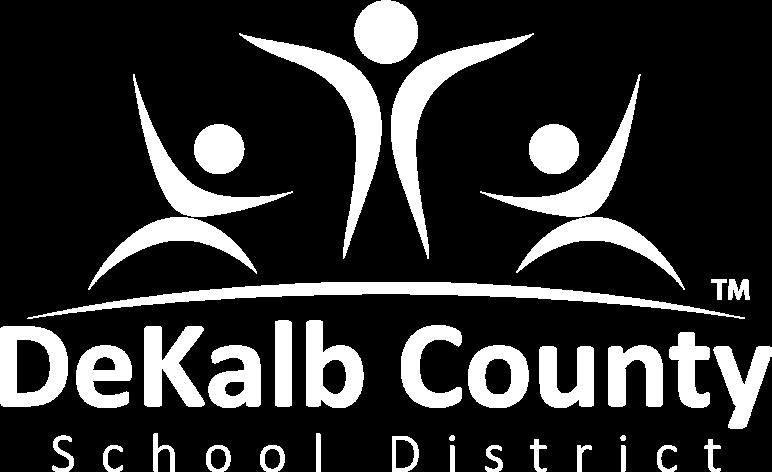
1701 Mountain Industrial Boulevard · Stone Mountain, GA 30083 | P: 678.676.1200 Designed by DCSD Communications 2023 | Printed by DCSD Print Shop






























































































